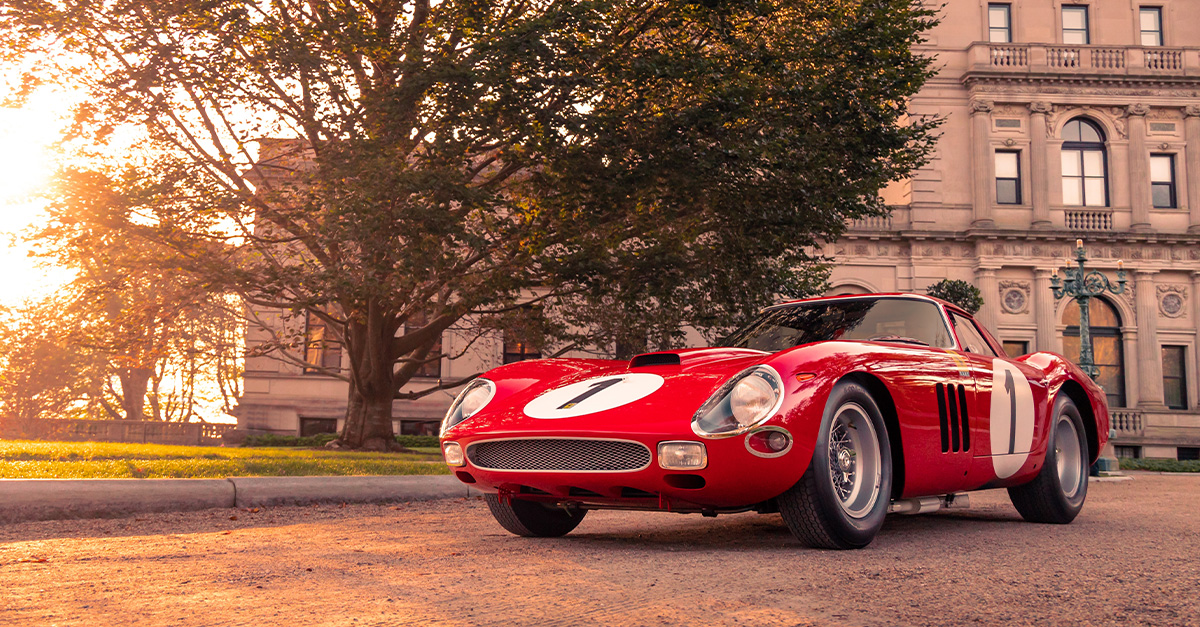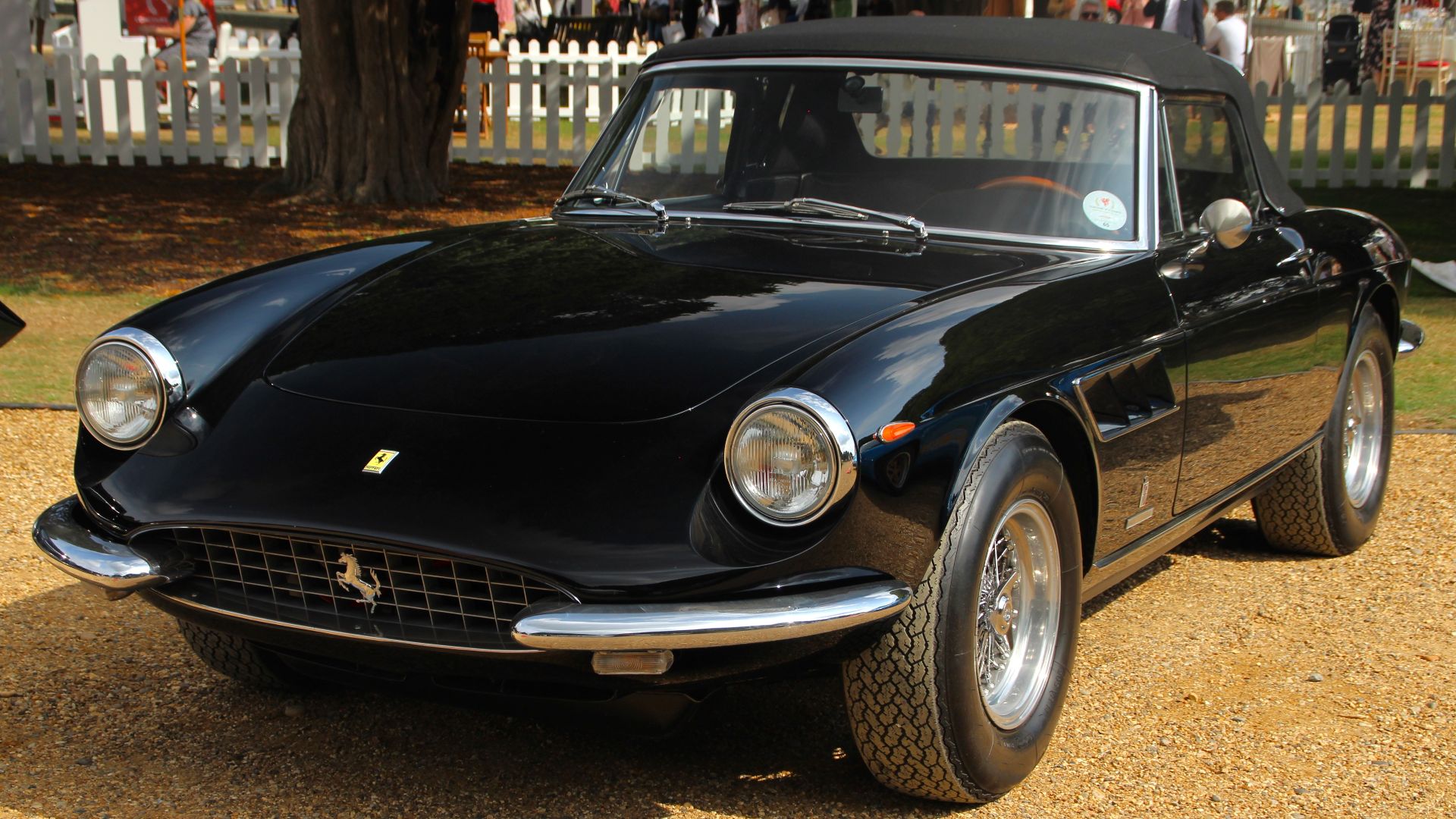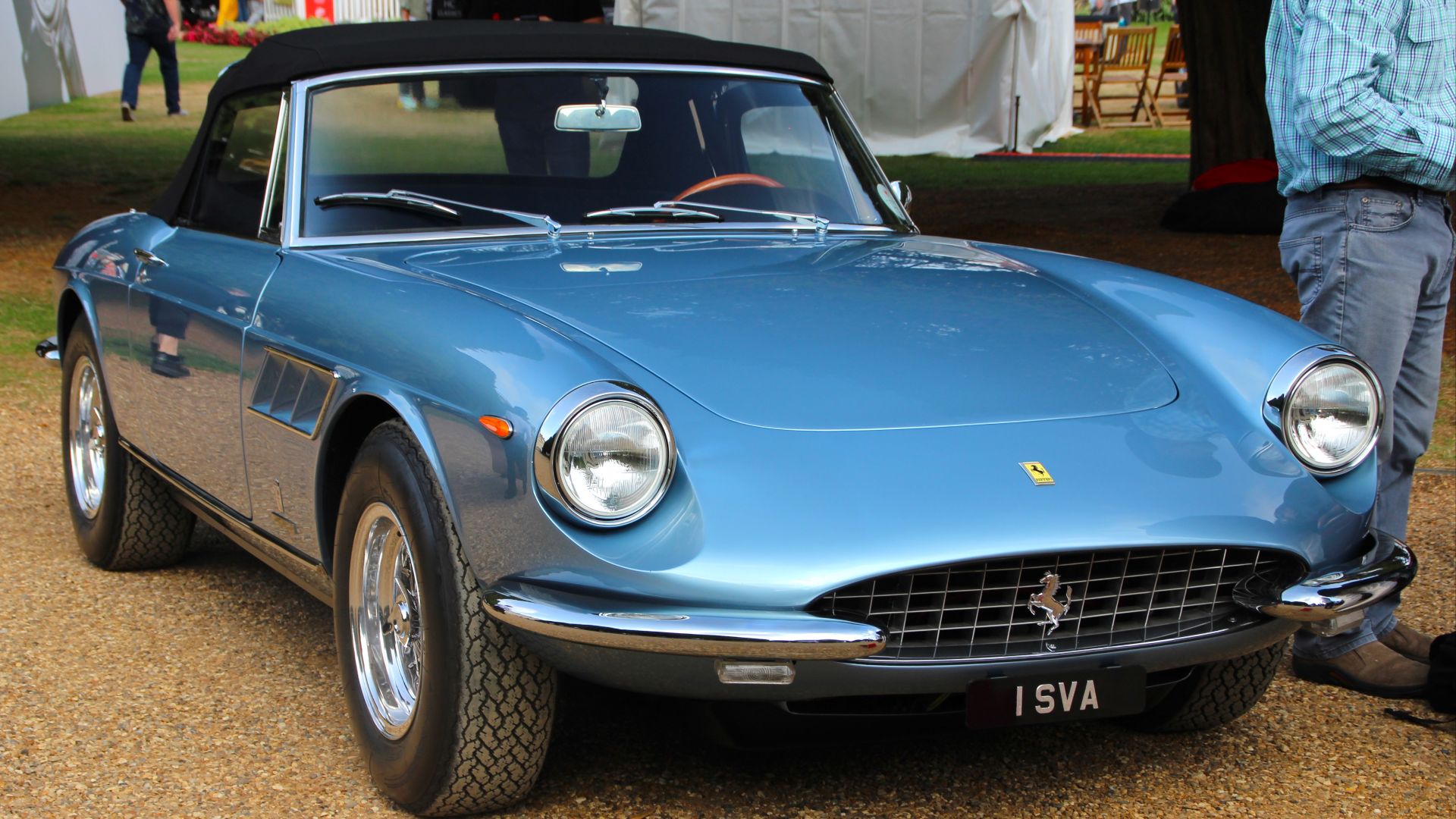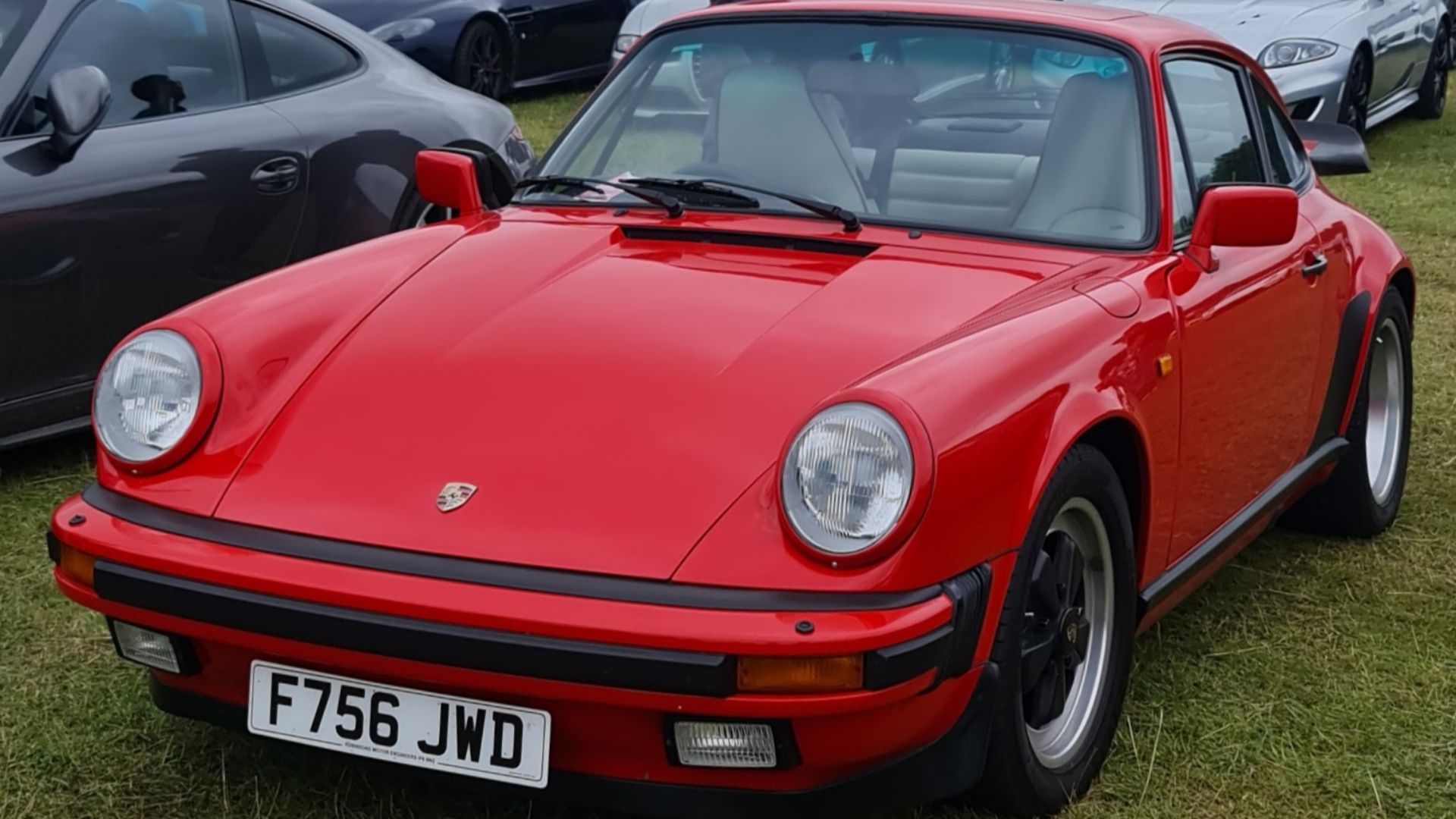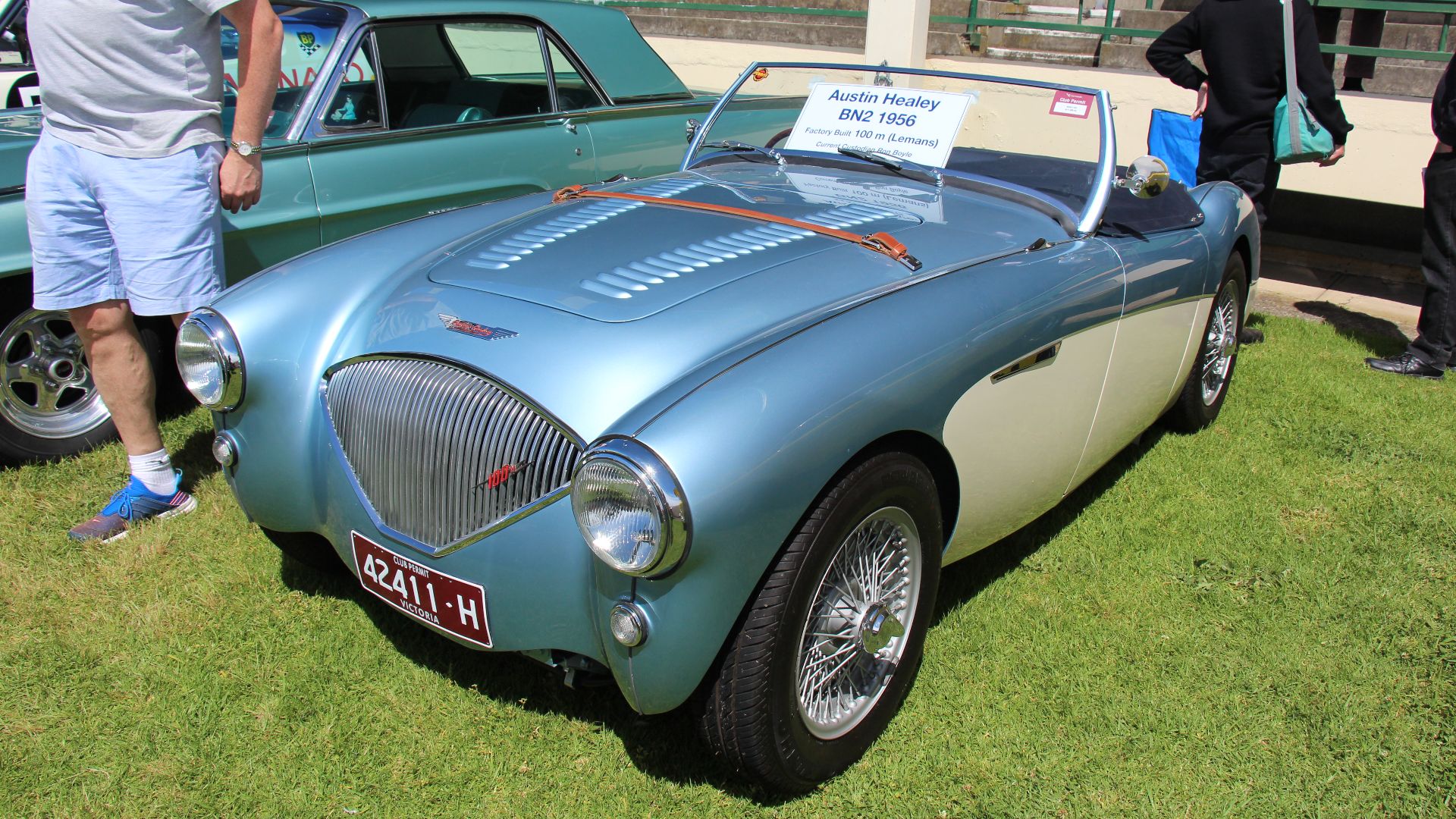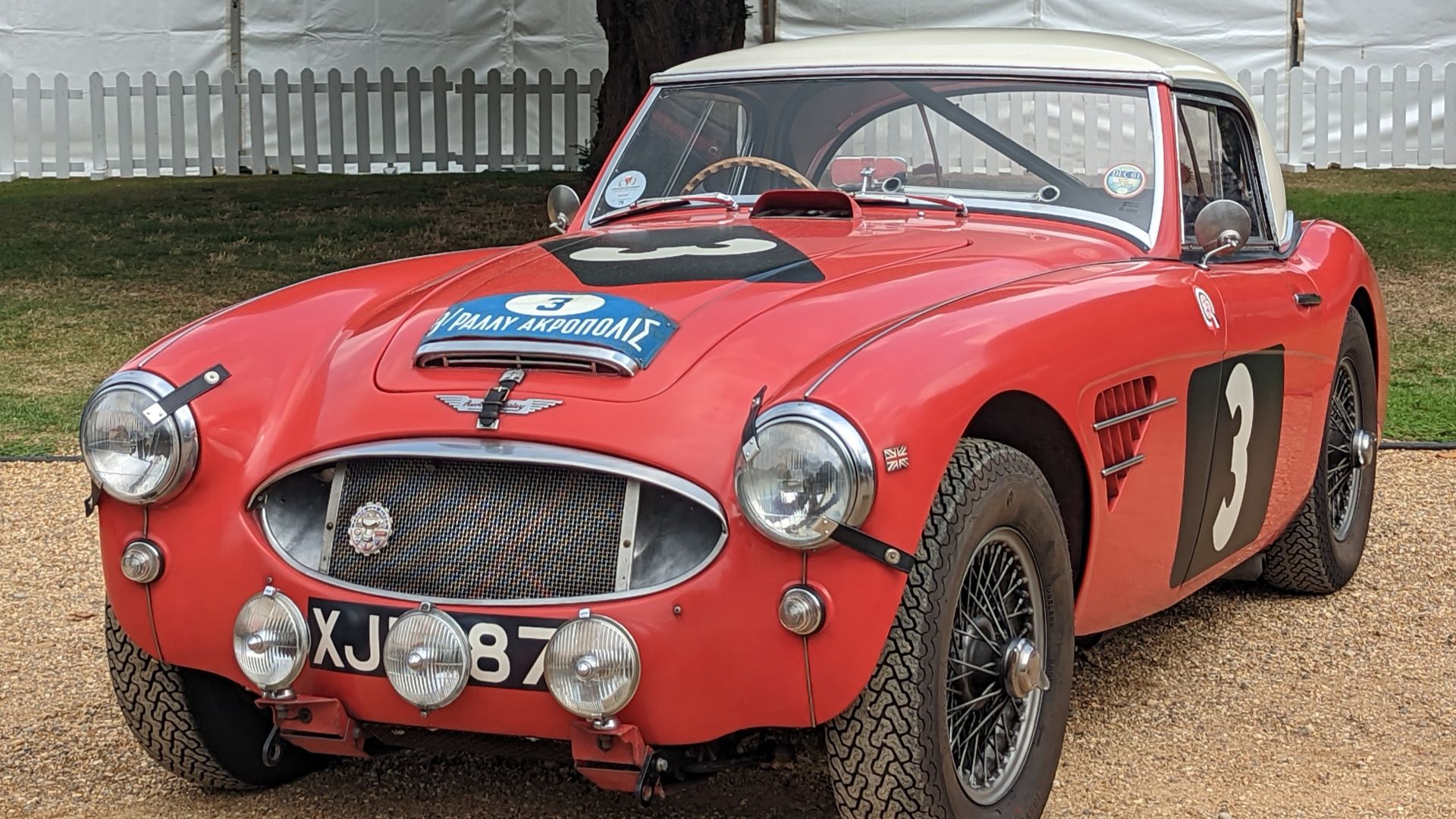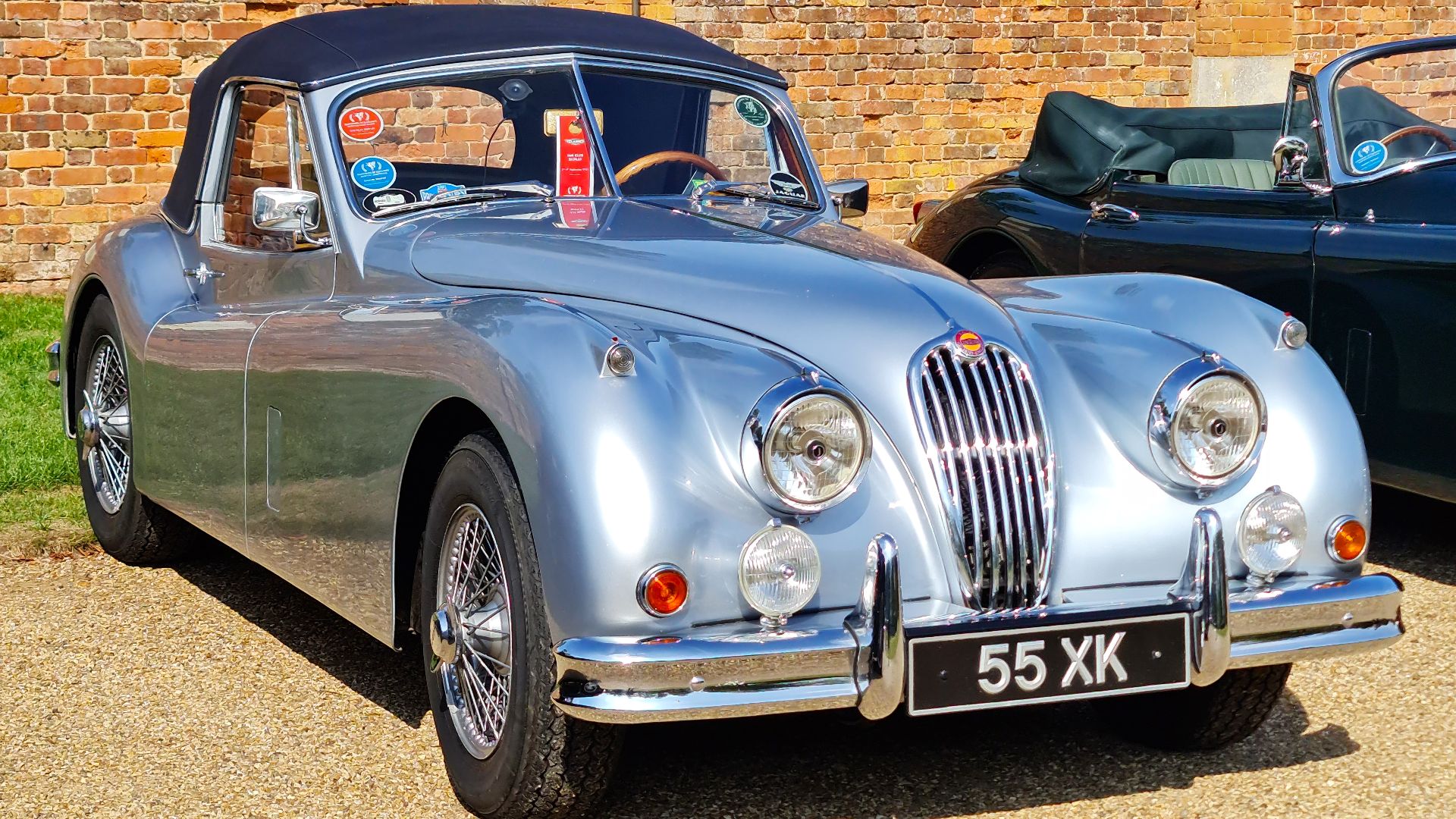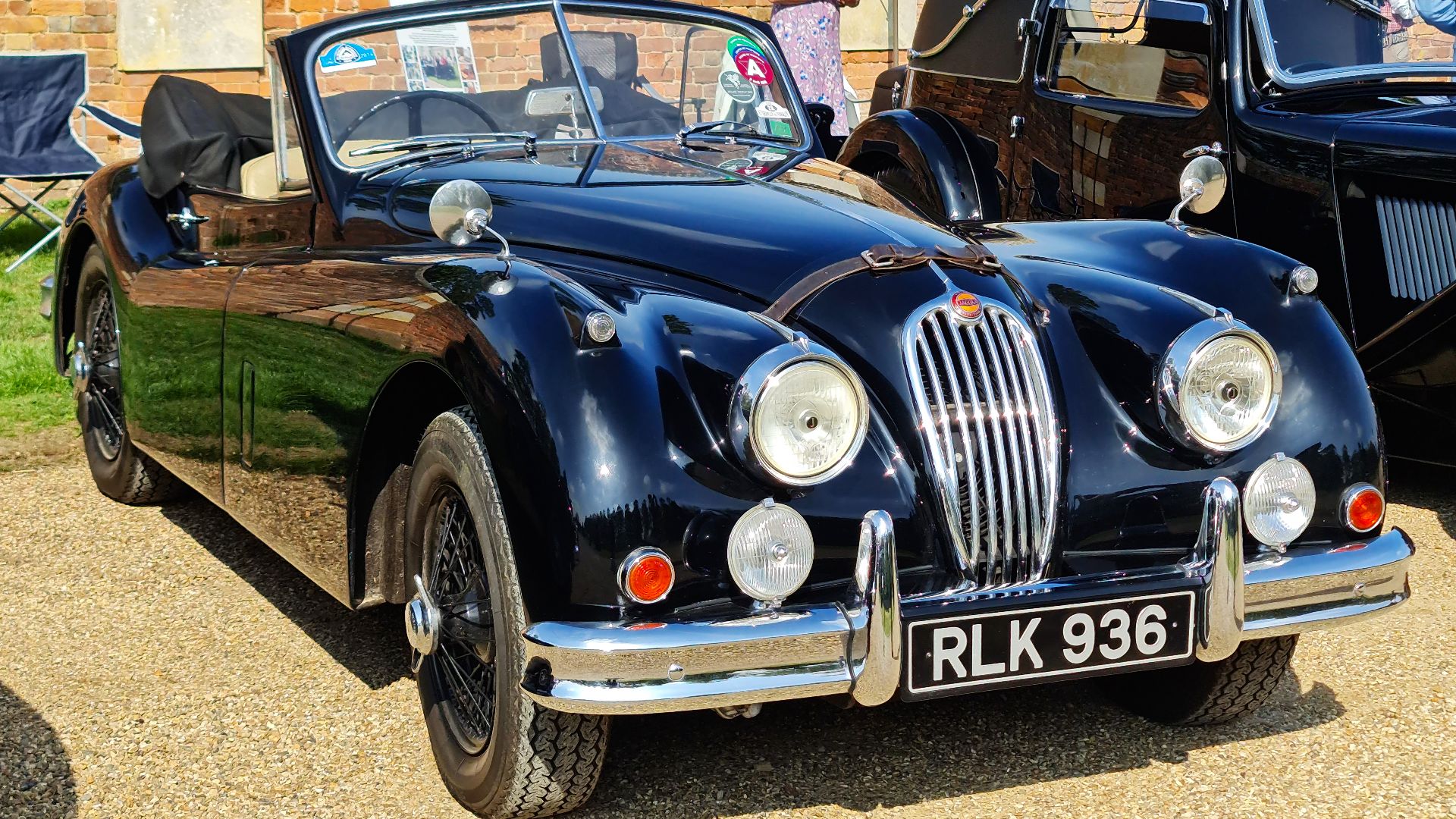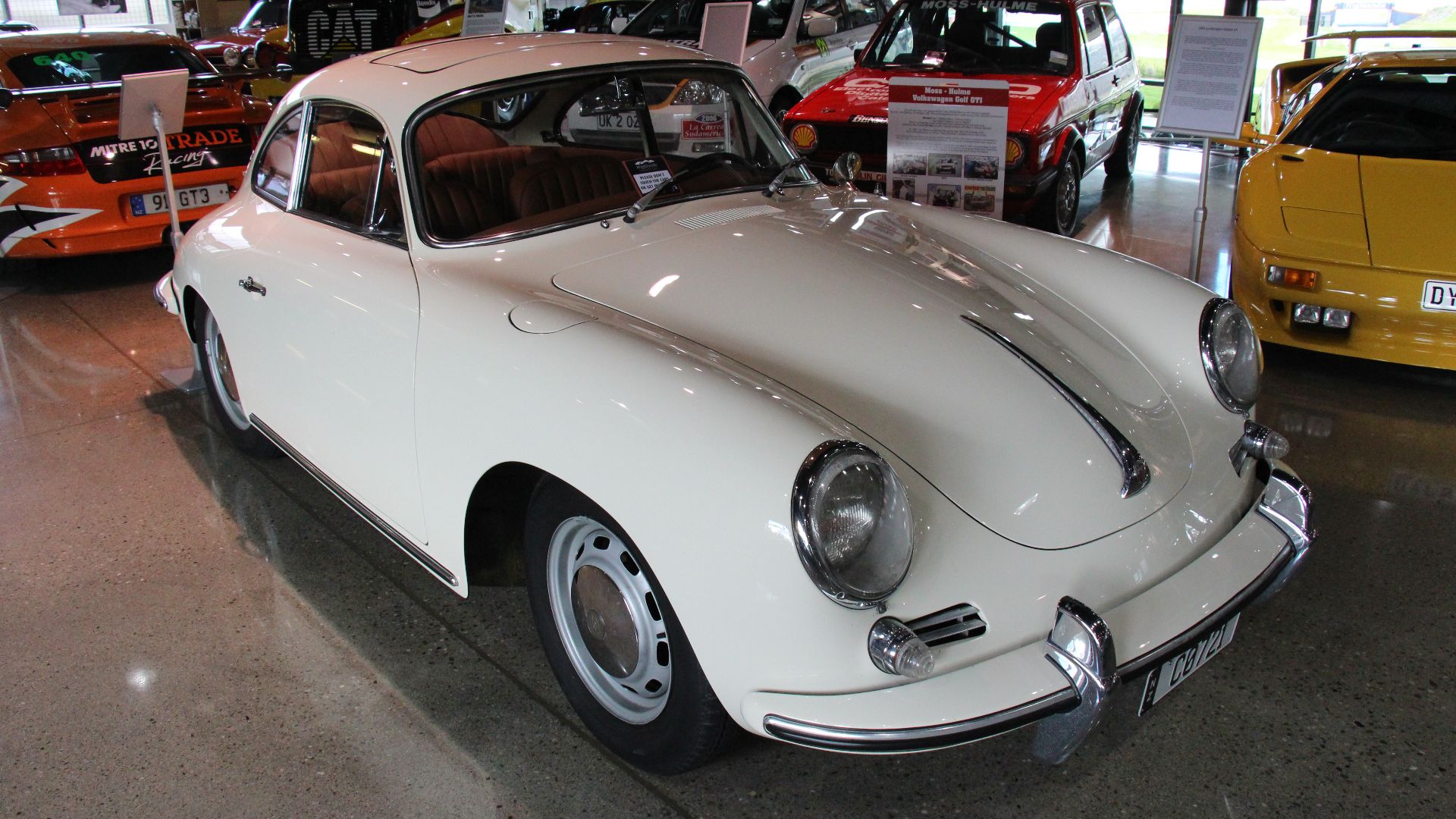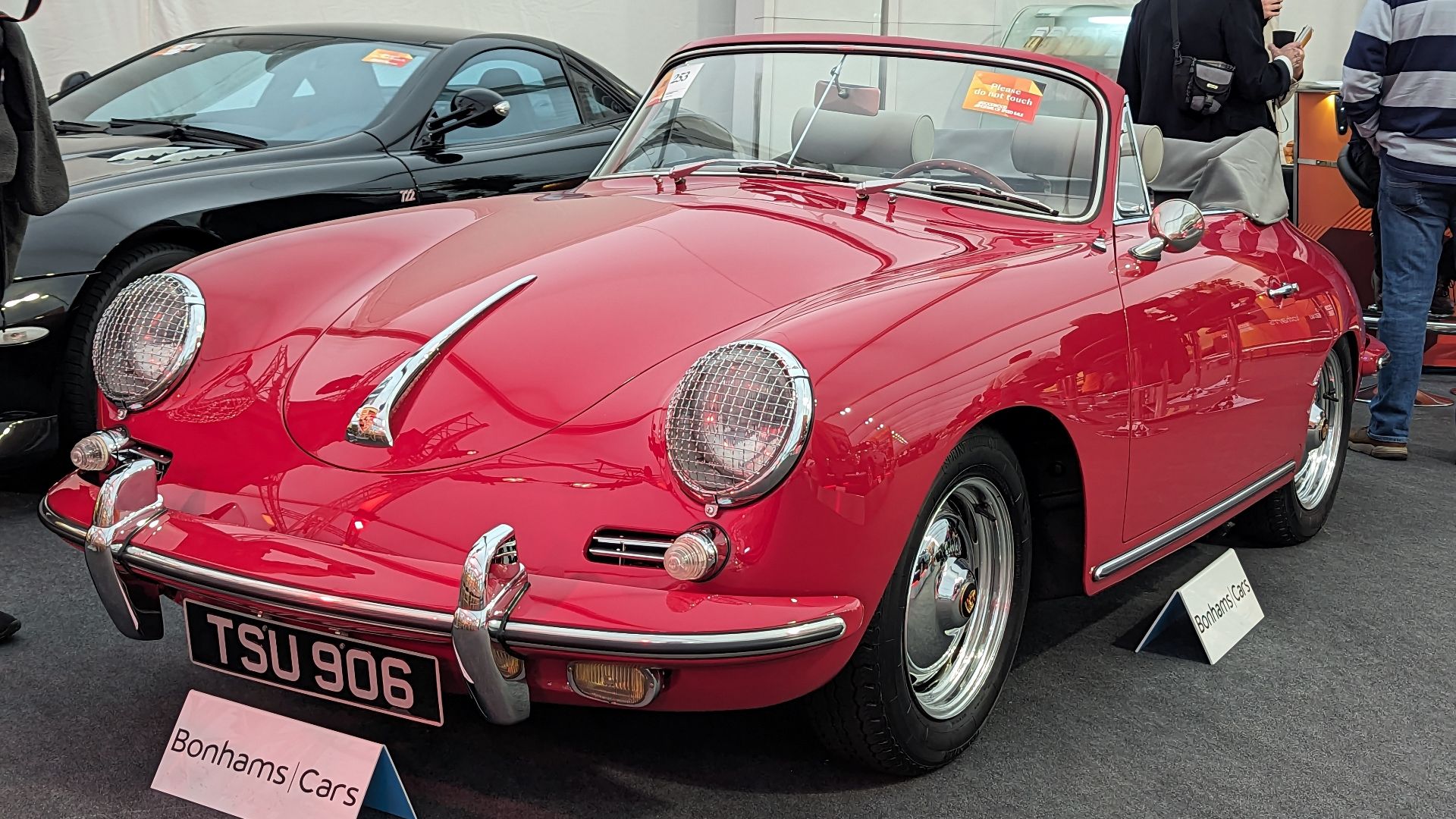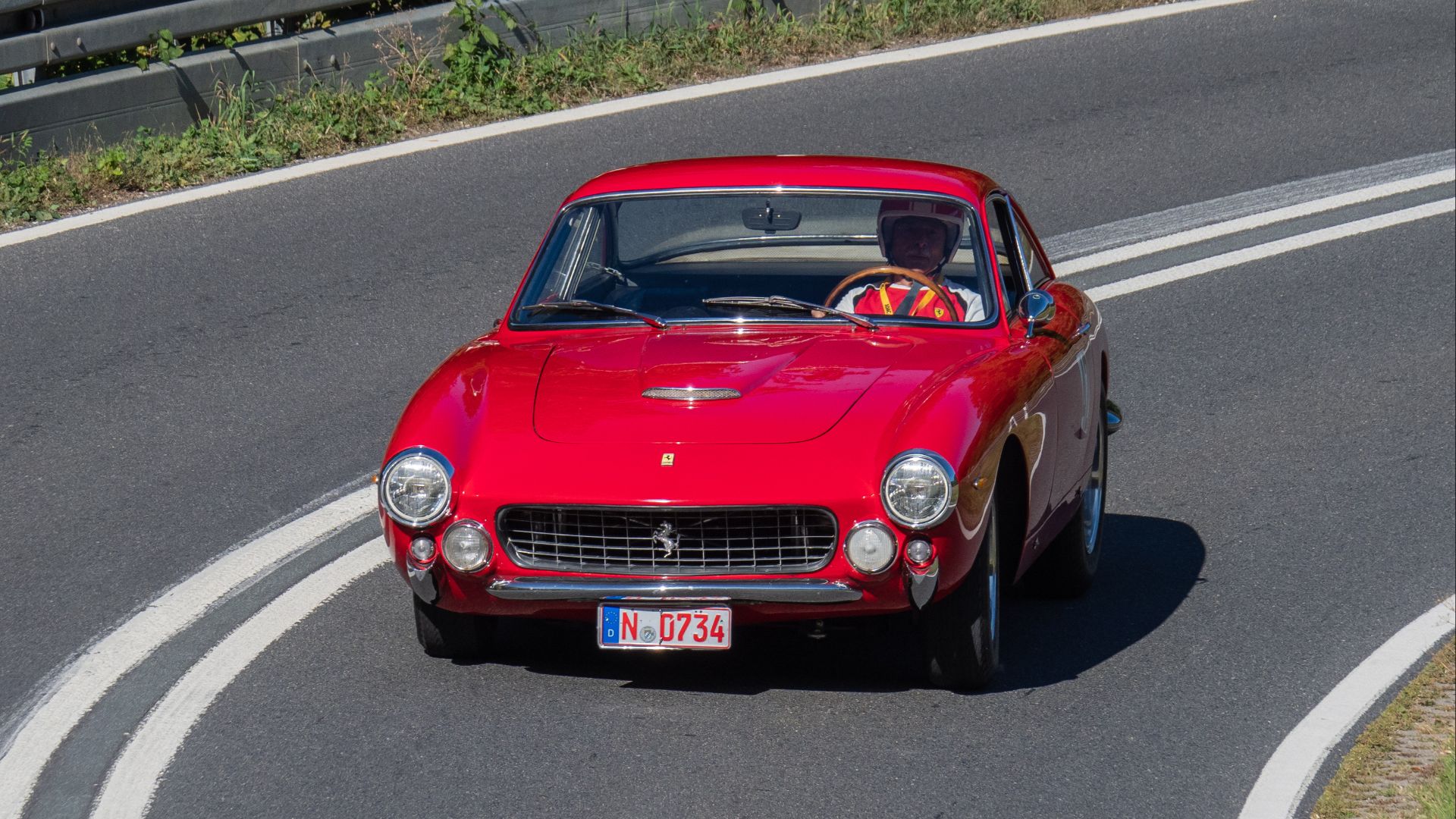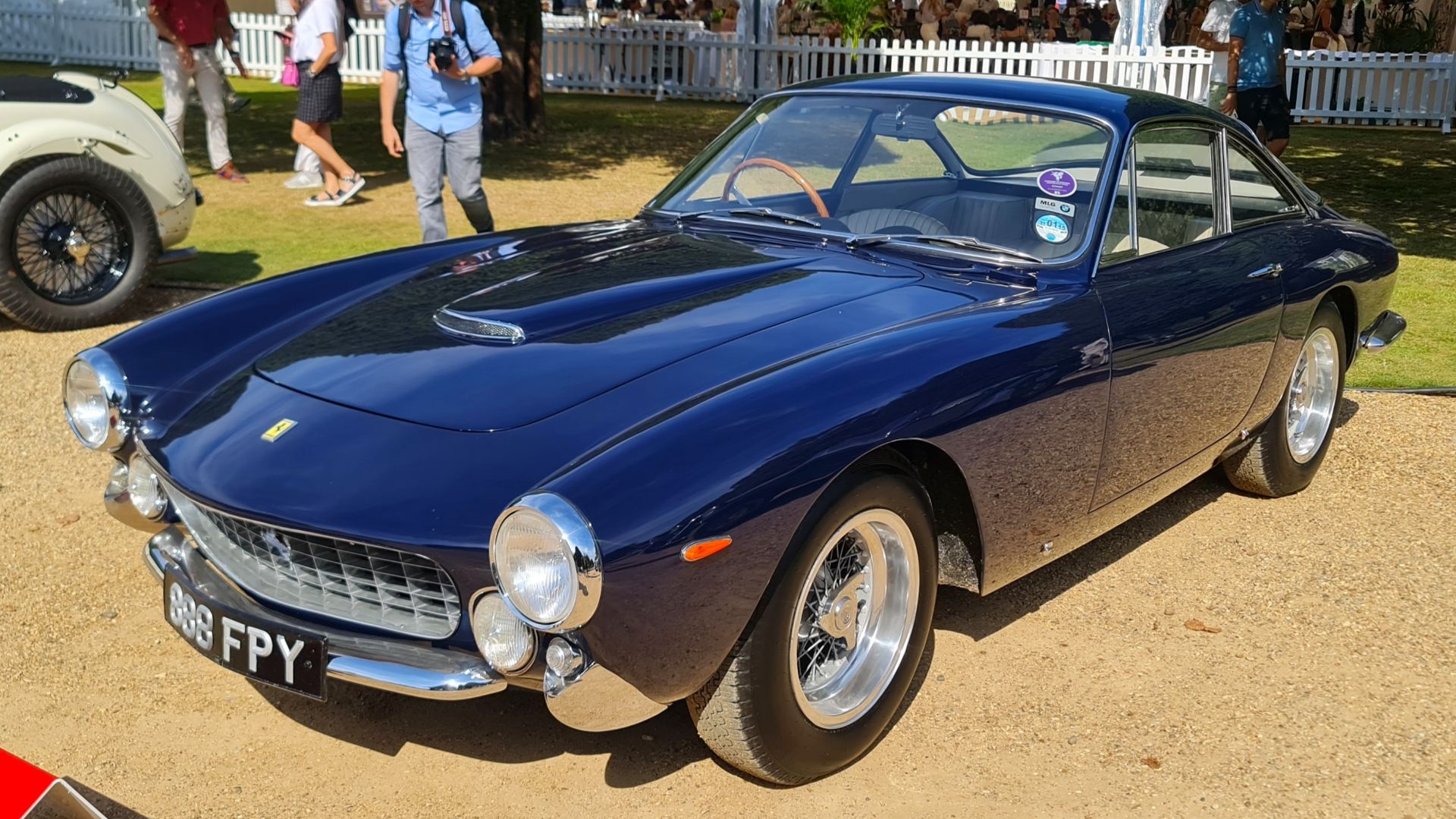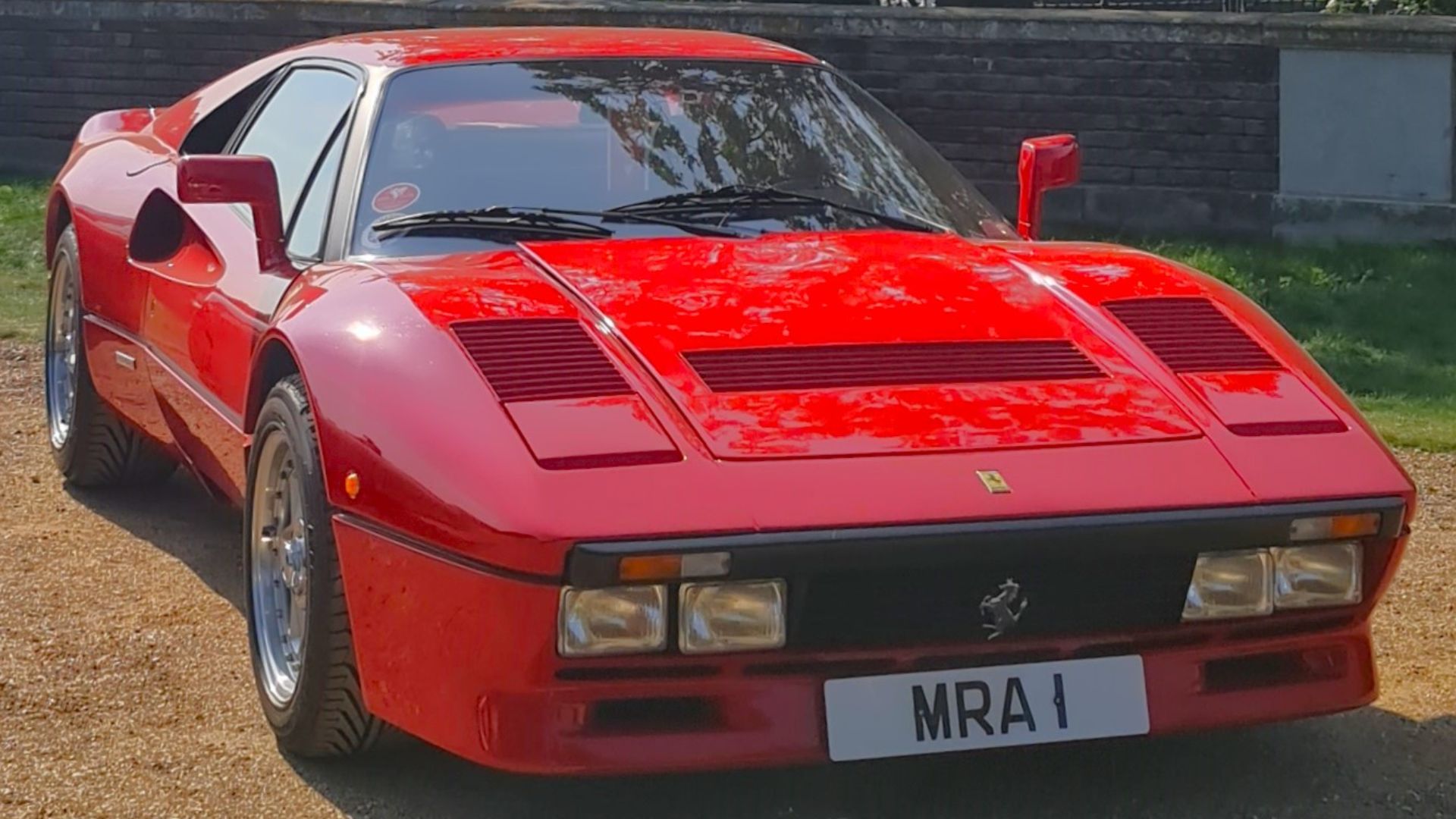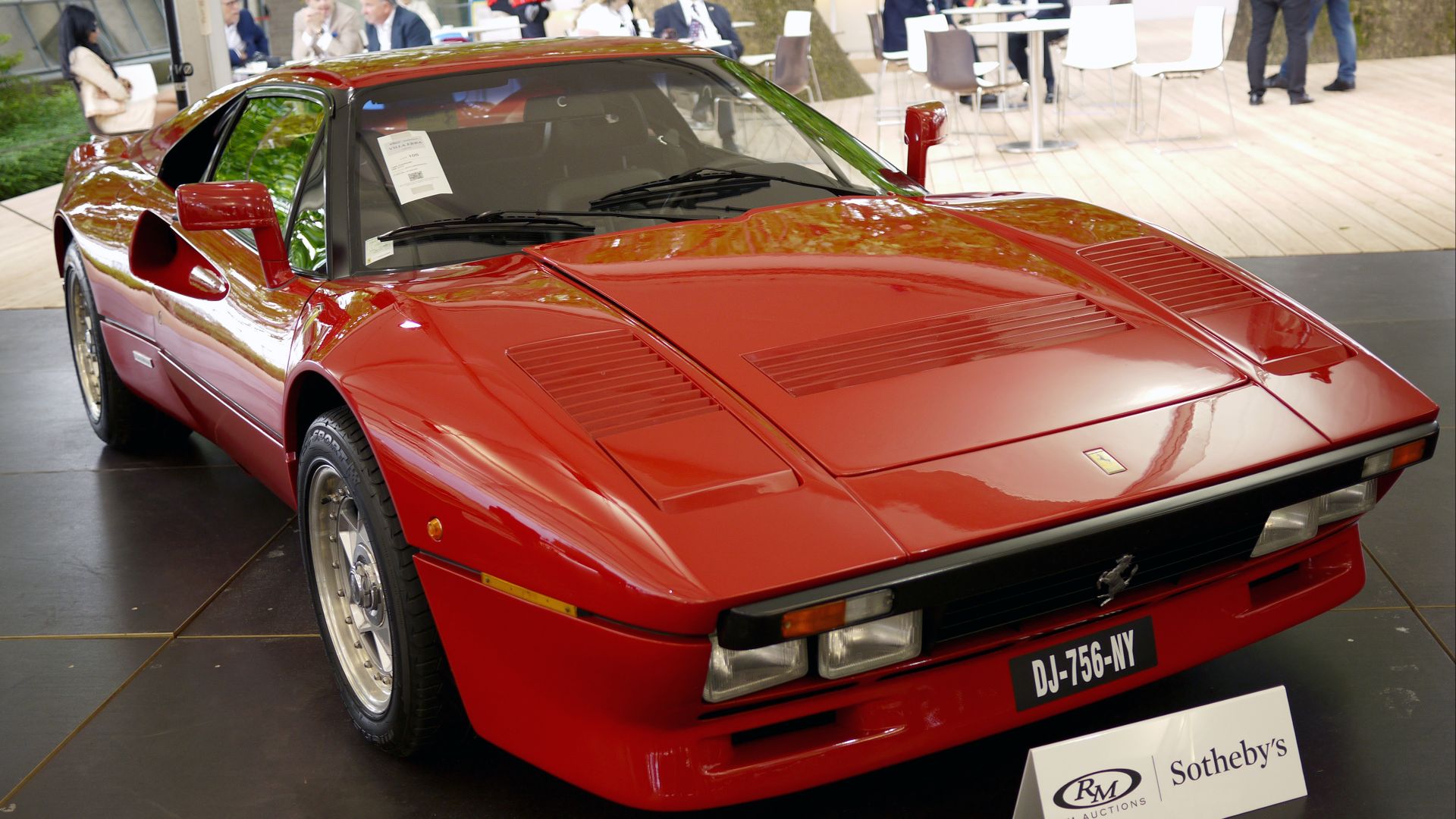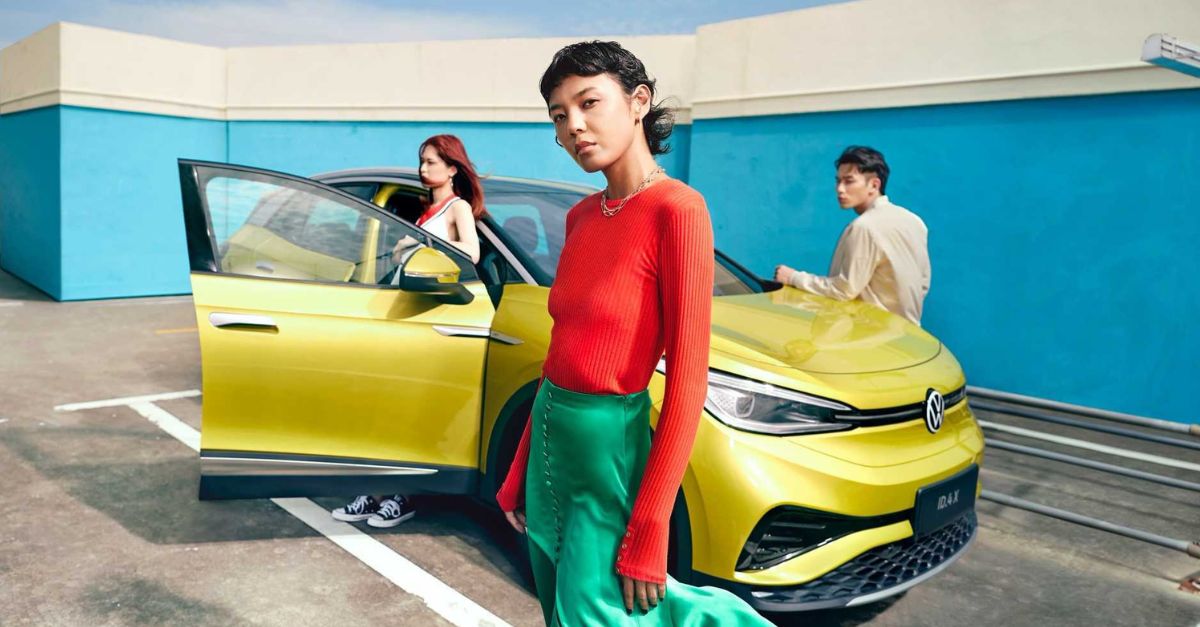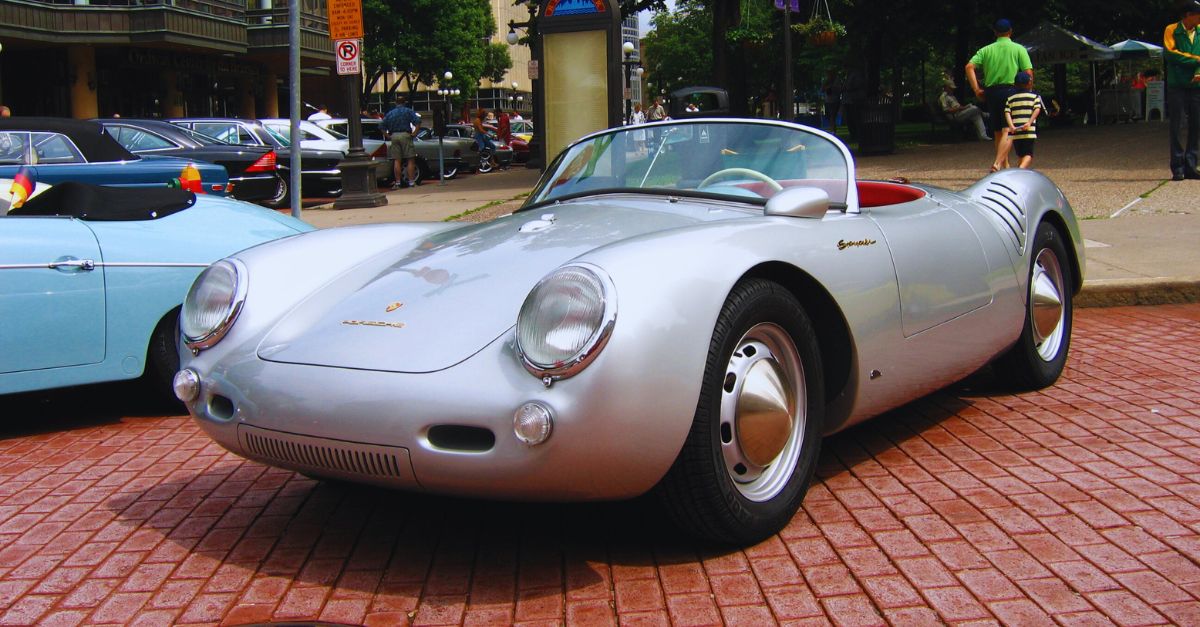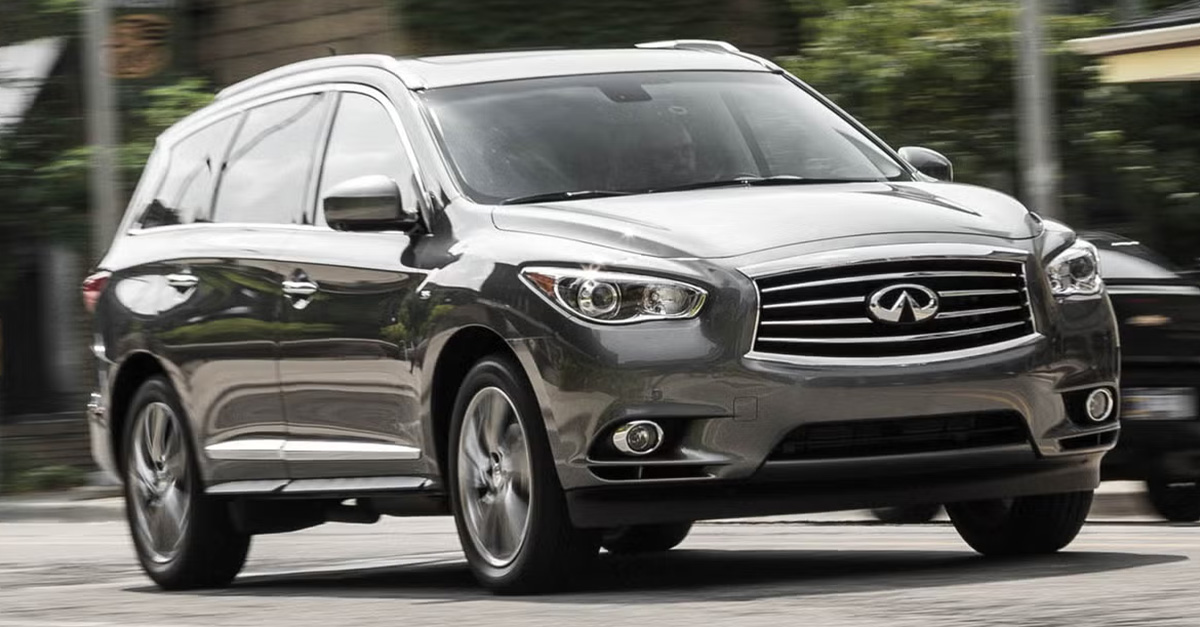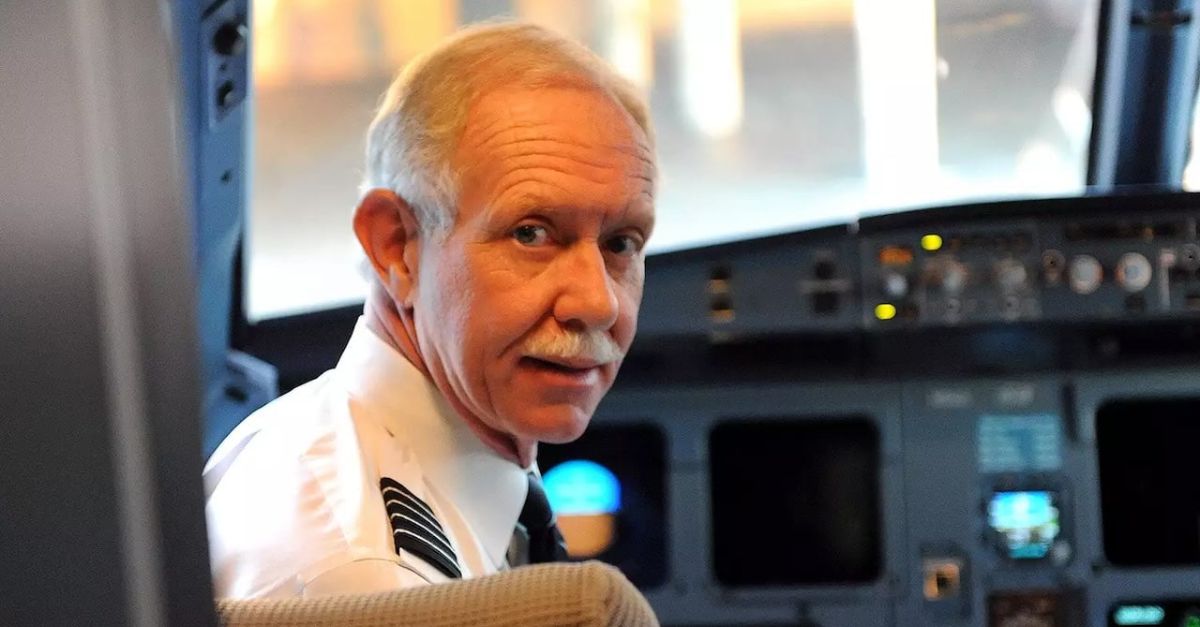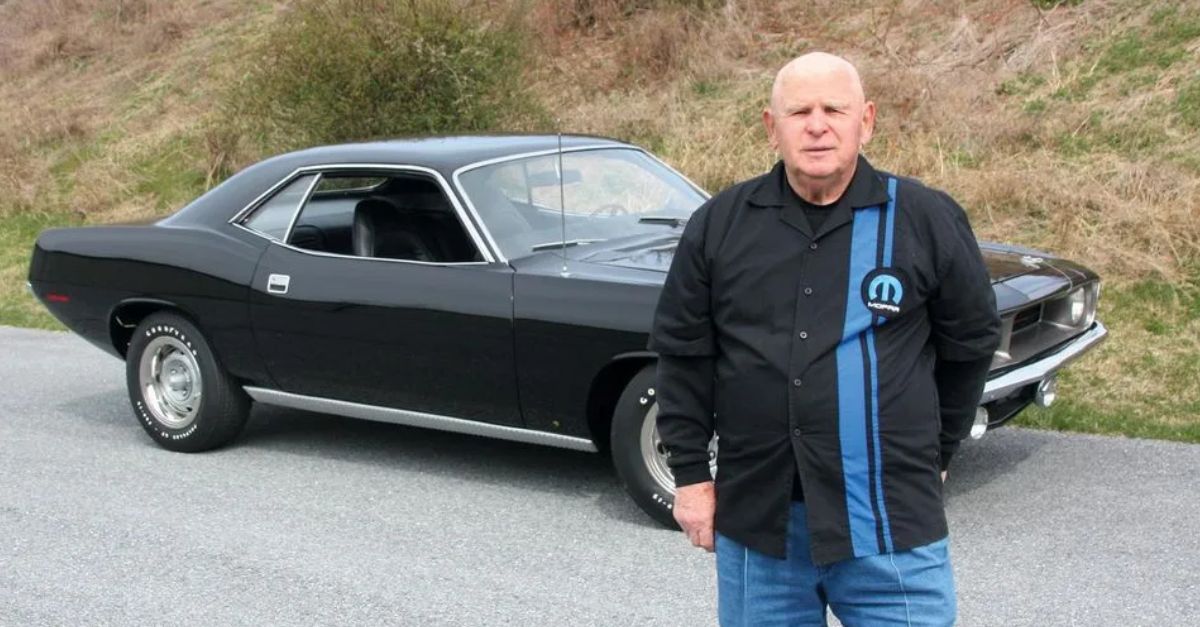David Letterman Has The Best Late-Night Show Host Car Collection
David Letterman is well-known as a respected comedian, late-night show host, journalist, and interviewer. He has one of the longest-running shows on cable news and one of the most interesting careers in media since Johnny Carson. Not only is Letterman a gifted storyteller, but he also loves cars. And by "loves," we mean he has an extensive collection that's supposed to be worth $400 million.
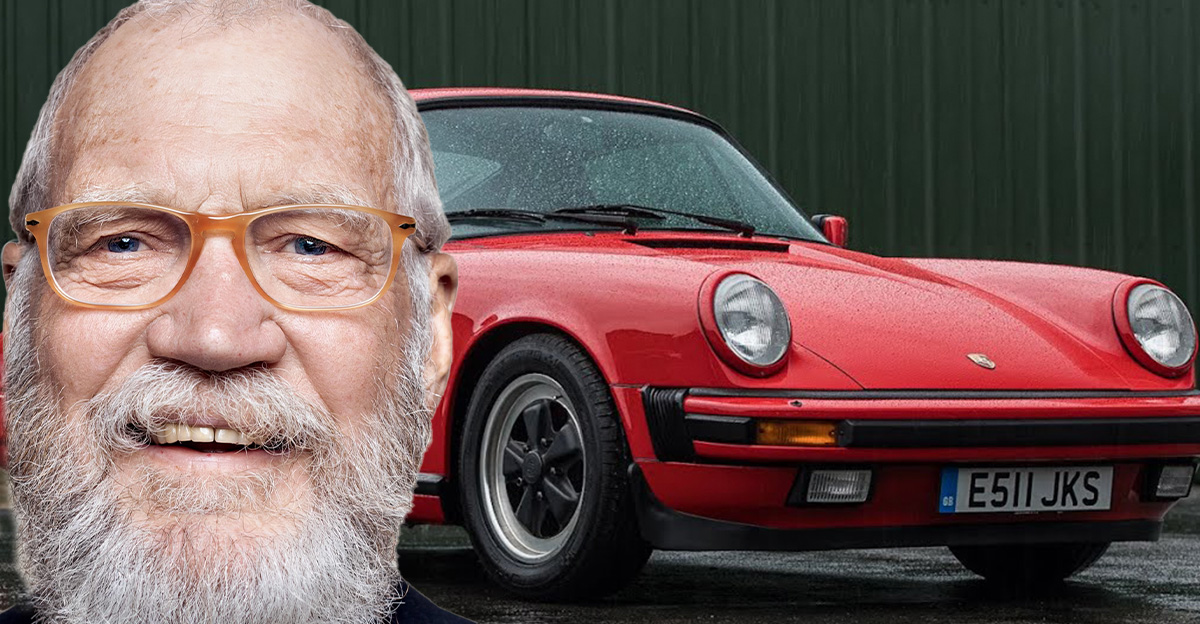
1968 Ferrari 330 GTS
Kicking off Letterman's extraordinary is a gorgeous 1968 Ferrari 330 GTS. One of many Ferraris in his collection, this one sits at just 43 inches tall and is the car that revolutionized Ferrari designs in the mid-1960s. Combine this with the curves and removable roof panels, just 1,274 of these were produced, making them ultra-rare.
1968 Ferrari 330 GTS (Cont'd)
Under the hood, the '68 330 GTS doesn't roar and purr as much, thanks to its design to be a quieter, smoother ride than its predecessors. Powered by a 4.0L Colombo V12 engine, the 330 GTS produced 300 hp and had a top speed of nearly 150 mph.
1968 Austin-Healey Bugeye Sprite
Another 1968 car in Letterman's collection is this Austin-Healey Bugeye Sprite. The small, open-top sports car was produced by Austin-Healey between 1958 and 1971. The "Bugeye" version was named so because of the placement of its headlights. The Sprite was powered by a 0.9L inline-four cylinder engine that produced just 43 hp.
 dave_7 from Lethbridge, Canada, Wikimedia Commons
dave_7 from Lethbridge, Canada, Wikimedia Commons
1968 Austin-Healey Bugeye Sprite (Cont'd)
We're sure that Letterman didn't get this British classic for its speed. No, it was definitely a style choice, despite the engine being upgraded with 1 1/8th-inch twin carburetors. It didn't help the Sprite go much faster, covering 0 to 60 in 20.5 seconds and an impressive top speed of 82 mph. This gorgeous British car is one of three Austin-Healeys in Letterman's collection.
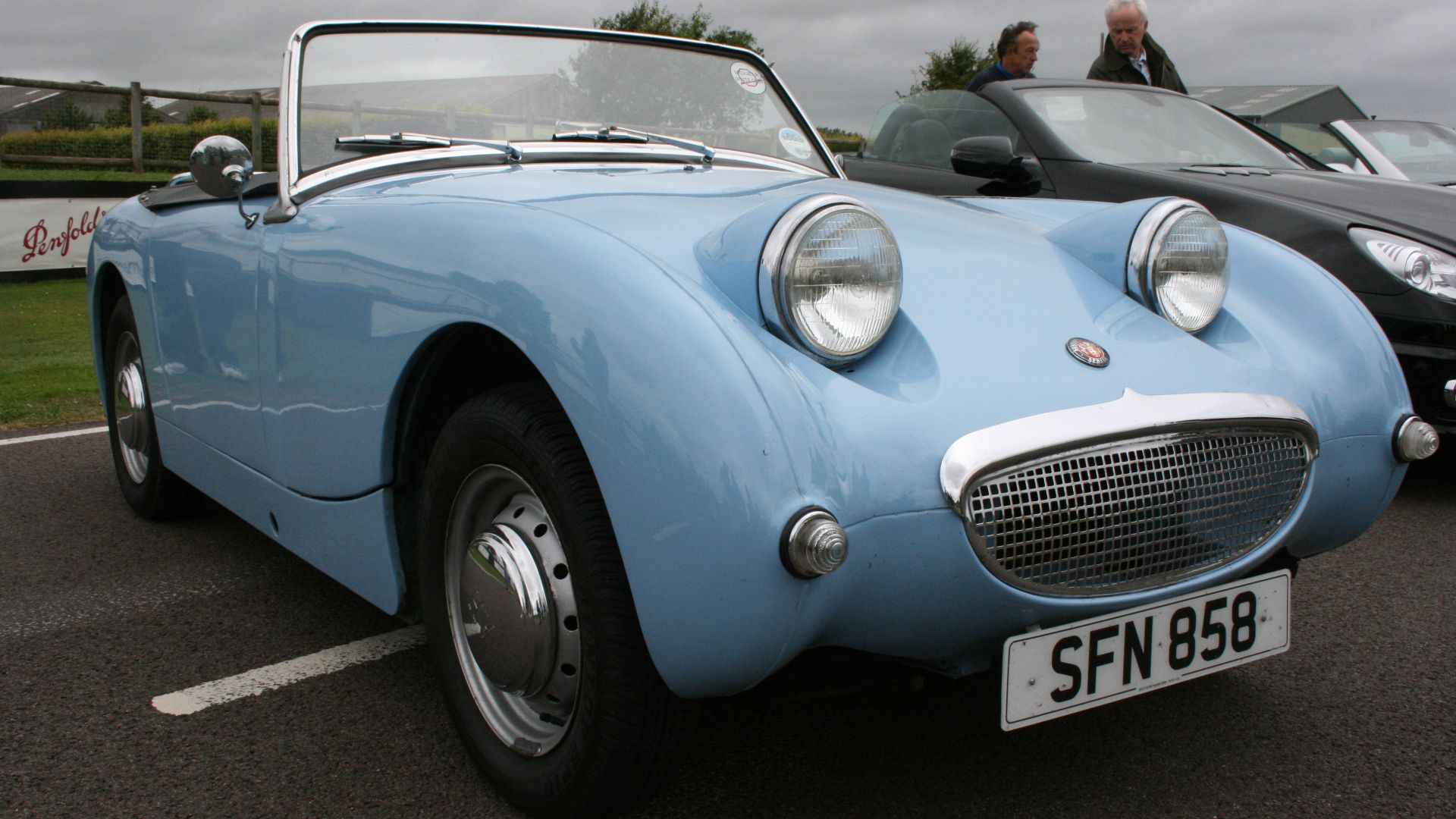 Supermac1961 from CHAFFORD HUNDRED, England, Wikimedia Commons
Supermac1961 from CHAFFORD HUNDRED, England, Wikimedia Commons
1973 Chevrolet C20 Cheyenne
Departing the 1960s briefly, we have the Chevrolet C20 truck in the "Cheyenne" form: the top trim of such a classic pickup. Among the innovations to the C20 Cheyenne were carpeting, more sound insulation, and a headliner. We're not sure exactly when Letterman picked this up, but we imagine it served as an in-use pickup for many years.
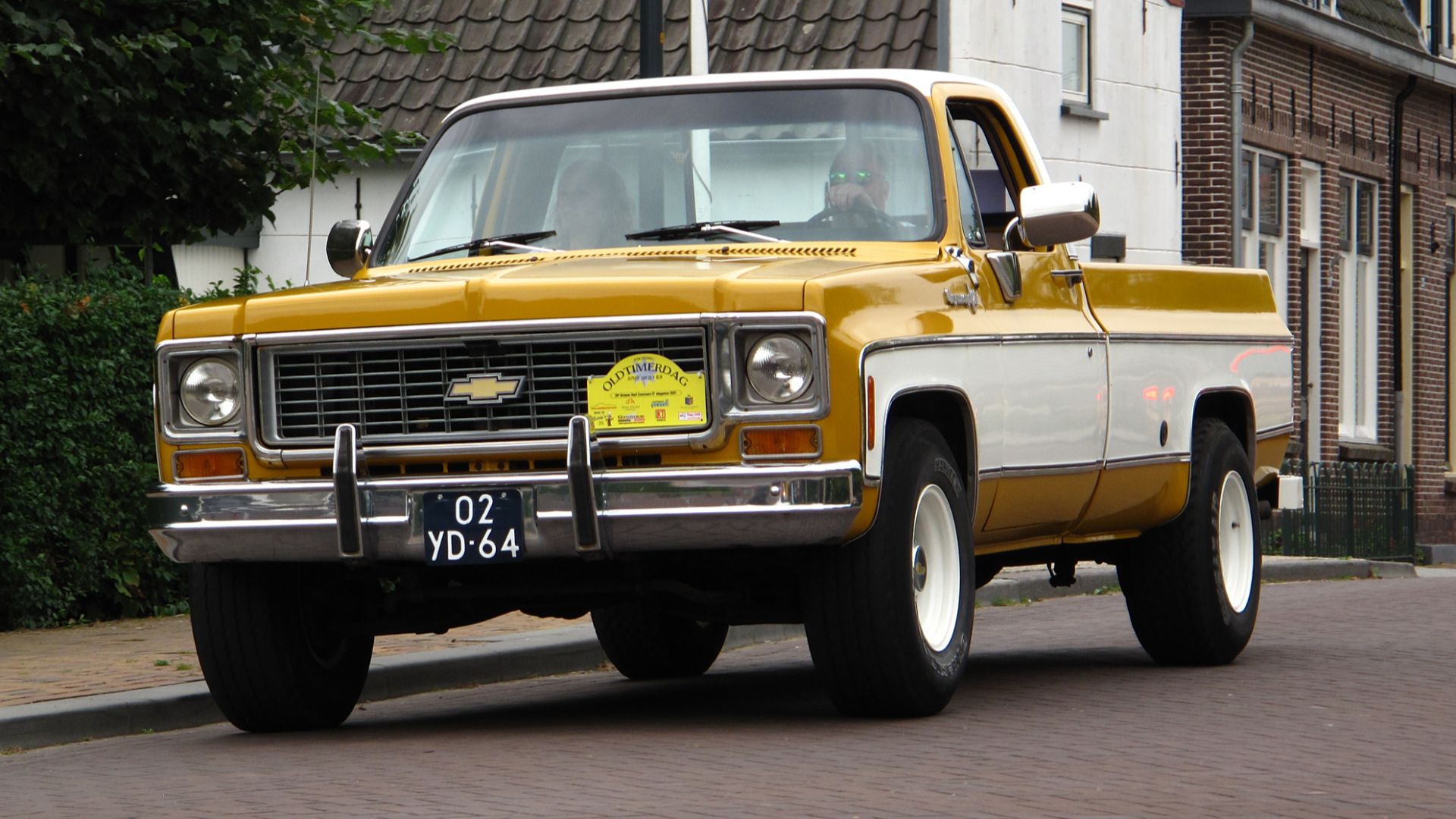 Rutger van der Maar, Wikimedia Commons
Rutger van der Maar, Wikimedia Commons
1973 Chevrolet C20 Cheyenne (Cont'd)
Powered by a 5.7L V8 engine, the C20 Cheyenne came with power steering, air conditioning, and a brand-new rubber-bushes suspension system to allow for a smoother ride. Producing about 200 hp with a carburetor, the C20 Cheyenne was a straightforward, purpose-built truck.
 1973 Chevrolet C20 Custom Deluxe 26k Survivor by EUROASIAN Bob
1973 Chevrolet C20 Custom Deluxe 26k Survivor by EUROASIAN Bob
1959 MGA Twin Cam
Produced by the British Motor Company, the MGA Twin Cam was a limited-edition sports car built for speed and power. First added to the line of MGA cars in 1958, Letterman's 1959 version was one of the last to roll off the production line, as the MGA Twin Cam ceased production in 1960. I wonder why...
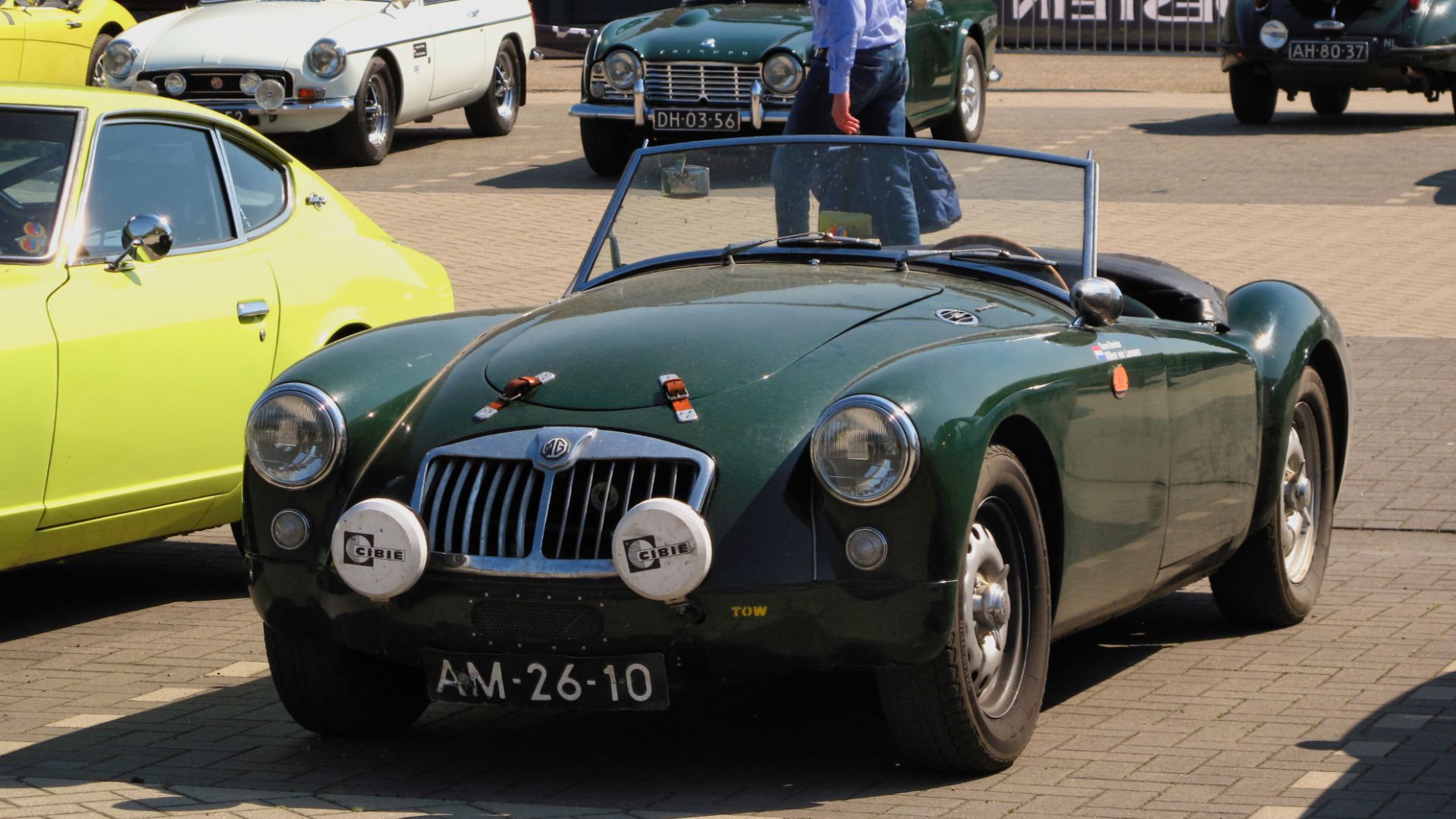 Rutger van der Maar, Wikimedia Commons
Rutger van der Maar, Wikimedia Commons
1959 MGA Twin Cam (Cont'd)
Unfortunately for the British Motor Company, the MGA TC had many issues. The engine was temperamental, littered with issues that caused many warranty claims, and suffered from detonation and burnt oil. After 2,111 units had been produced in 1960, the Twin Cam was canned, but not before it was road-tested to a top speed of 113 mph and a 0-60 time of 9.1 seconds. Quick enough for Letterman, obviously. We hope his engine hasn't blown up.
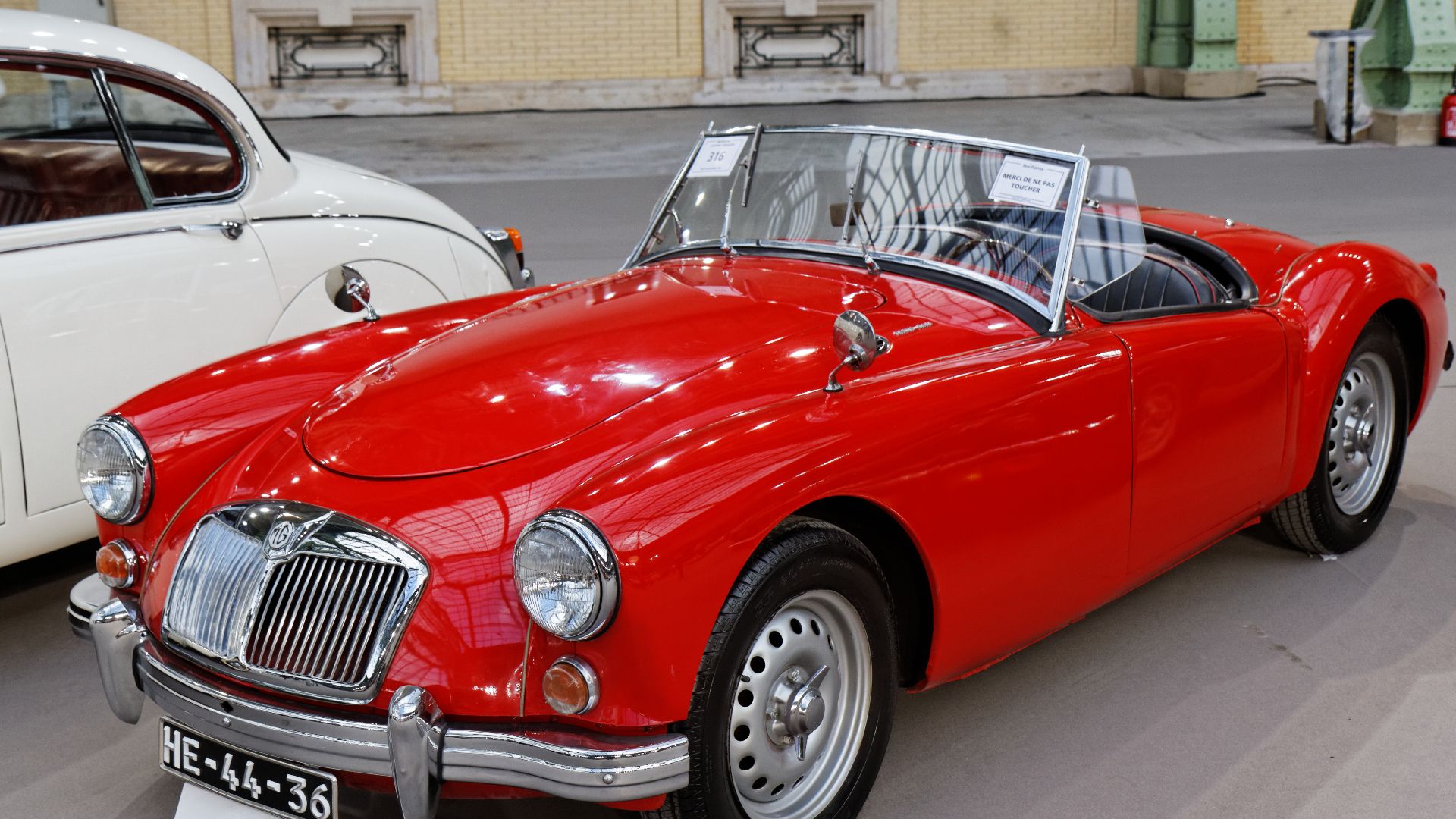 Thesupermat, Wikimedia Commons
Thesupermat, Wikimedia Commons
1988 Porsche 911 Carrera Coupe
From the late 50s to the 80s, we have the first Porsche (of many) in David Letterman's collection. The 1988 911 Carrera is a gorgeous Porsche, one of the most reliable and sought-after versions of the classic 911. The rear-engine, rear-wheel-drive coupe is equipped with a six-cylinder port injection engine that produces 195 lb-ft of torque.
1988 Porsche 911 Carrera Coupe (Cont'd)
Not only is it powerful, it's also pretty quick: a top speed of 152 mph. Interestingly, Letterman's model of Carrera coupe from the late 80s didn't come with a turbocharger, or a supercharger—just a plain old Porsche air-cooled engine. We hope Letterman has gotten to enjoy this classic Porsche as much as other car enthusiasts seem to. There's something about German engineering, isn't there?
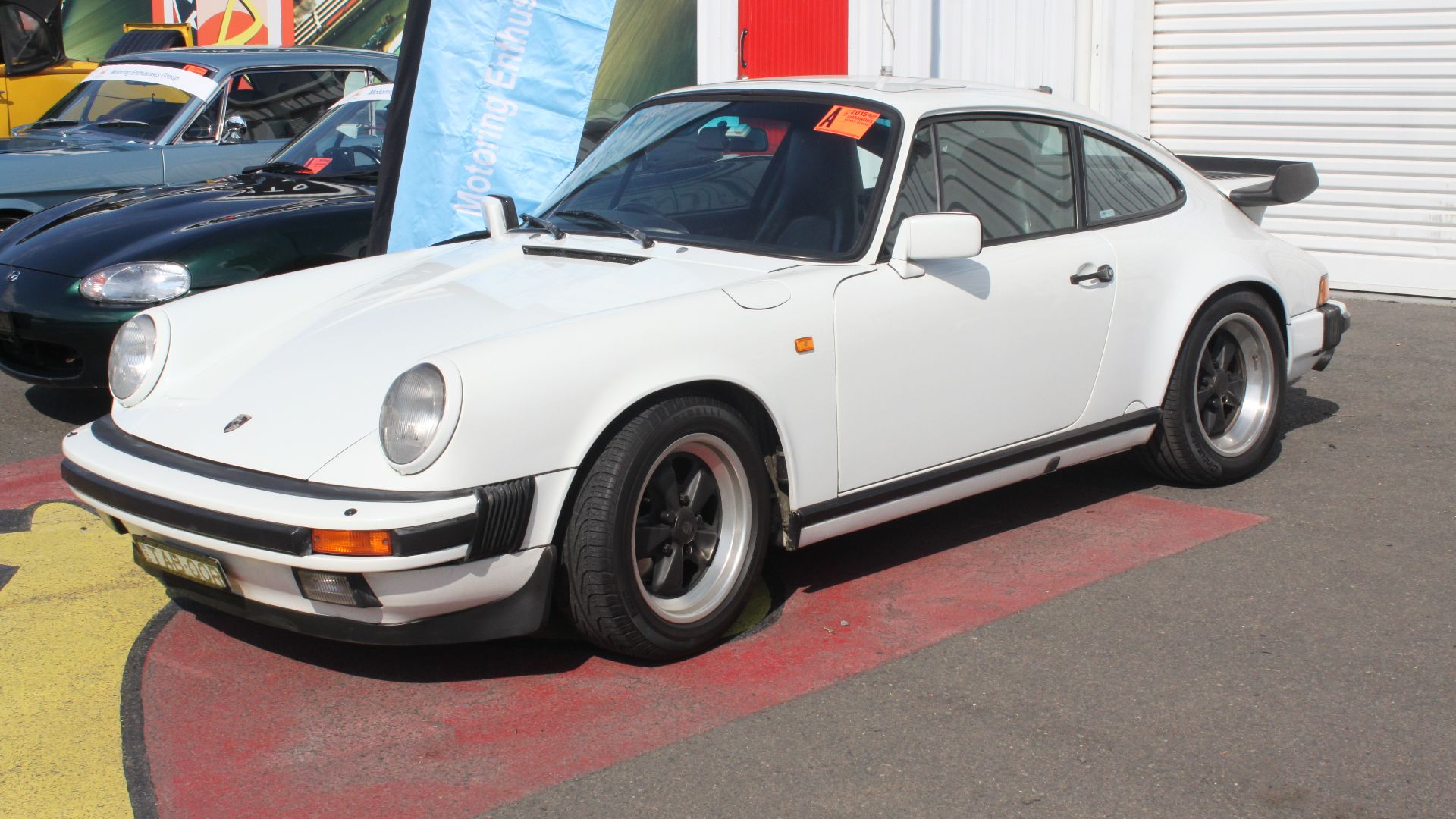 Jeremy from Sydney, Australia, Wikimedia Commons
Jeremy from Sydney, Australia, Wikimedia Commons
1956 Austin-Healey 100-4 BN2
Back to Britain now, with the 1956 Austin-Healey 100-4 BN2. This gorgeous sports car was built with one goal and one goal only: produce a car that could go 100 mph. It succeeded, thanks to the 4.3L four-cylinder engine that produced 90 hp and had the engineering brilliance of Donald Healey. Letterman is clearly a fan of the brand and picked up this British racer in a gorgeous cream white with flowing fenders.
1956 Austin-Healey 100-4 BN2 (Cont'd)
The 1956 Austin-Healey 100-4 BN2 was the first Austin-Healey 100-4 to feature a two-tone paint job and a real four-speed manual transmission. The car was incredibly popular in the United States, with 150 sales in California every month, while production of the car topped out at 200 cars a month.
 Stephen Foskett (Wikipedia User: sfoskett), Wikimedia Commons
Stephen Foskett (Wikipedia User: sfoskett), Wikimedia Commons
1988 Ferrari 328 GTS
Back to Italy, with a stunning 1988 Ferrari 328 GTS, one of the more modern Ferraris in Letterman's extensive collection. The '88 328 GTS is a completely different shape from his other models, featuring a redesigned front end that has less flow and more hard angles than his other Ferraris. The mid-engine sports car was powered by a 3.2L V8 engine, generating 270 hp.
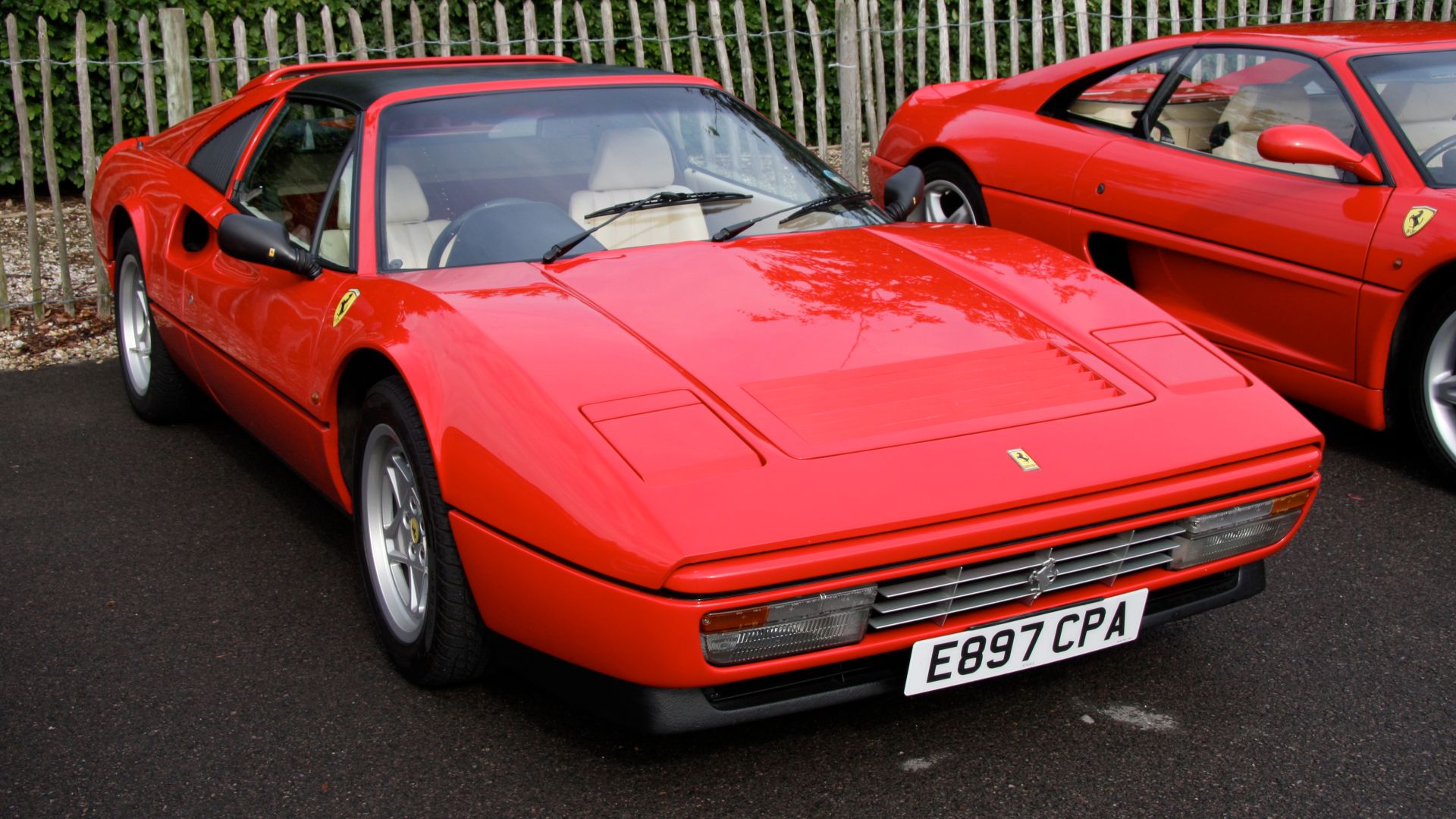 Brian Snelson from Hockley, Essex, England, Wikimedia Commons
Brian Snelson from Hockley, Essex, England, Wikimedia Commons
1988 Ferrari 328 GTS (Cont'd)
Maybe Letterman admired the reliability and practicality of the 328 GTS, a much less flamboyant vehicle than some of its predecessors. Despite the restraint exercised by Ferrari in building this, it still had a top speed of 163 mph.
 Alf van Beem, Wikimedia Commons
Alf van Beem, Wikimedia Commons
1961 Austin-Healey 3000 Mk I
Letterman's a fan of Austin-Healey, can't you tell? This one from 1961 was one of the most popular cars from England in North America in the early 1960s, with almost all of the built Austin-Healeys being exported to North America.
1961 Austin-Healey 3000 Mk I (Cont'd)
Powered by a 2.9L inline-six engine, the Austin-Healey 3000 could hit 60 mph in 11.7 seconds and had an impressive top speed for the early 1960s of 115 mph. Outside of traditional driving, the Austin-Healey 3000 had an extensive history on the racetrack and was raced from its introduction. It also won Best Design at the 1962 Earls Court Car Show, when Sergio Pininfarina debuted a closed-roof grand tourer version.
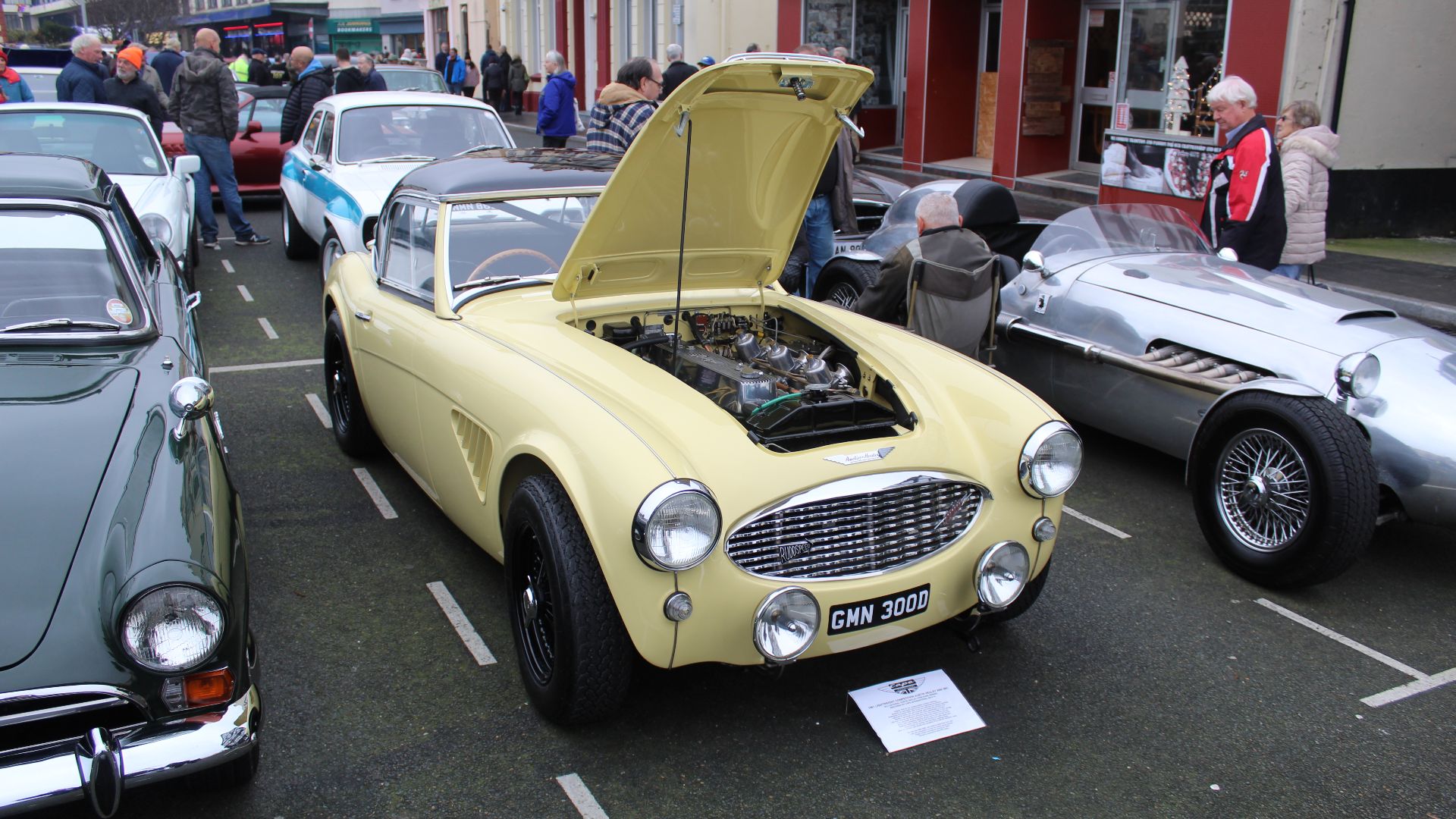 Frank Schuengel, Wikimedia Commons
Frank Schuengel, Wikimedia Commons
1955 Jaguar XK140
Letterman loves British cars, doesn't he? If any further evidence of his affection for English craftsmanship was needed, this 1950s Jaguar XK140 should suffice. A successor to the XK120, the XK140 had many improvements, including more legroom (great for Letterman's 6'1" frame), improved brakes, and telescopic shock absorbers.
1955 Jaguar XK140 (Cont'd)
Unlike the XK120, the grille of the XK140 was cast as one piece, with larger front and rear bumpers. Powered by a 3.4L inline-six engine, the XK140 produced 210 hp and was the first Jaguar sports car to be offered with an automatic transmission. Its top speed was an impressive 120 mph.
1964 Porsche 356C
A couple of Porsches are up next—can you tell Letterman prefers European sports cars to American muscle? This stunning 1964 Porsche 356C was the car that preceded the staggering 911s (also in Letterman's collection). Built with a gorgeous matte black paint with a red interior, the 1964 Porsche 356C also featured cutting-edge mechanical upgrades like radial tires and all-around disc brakes. This innovation from Porsche led to others adopting disc brakes as standard.
1964 Porsche 356C (Cont'd)
Letterman's 356C was powered by a pushrod-operated "SC" engine that produced 95 hp and a top speed of 115 mph. The final Porsche 356 model paved the way for the 911. The last 10 356Cs were provided to the Dutch National Police by Ferry Porsche and were used for patrolling Dutch highways.
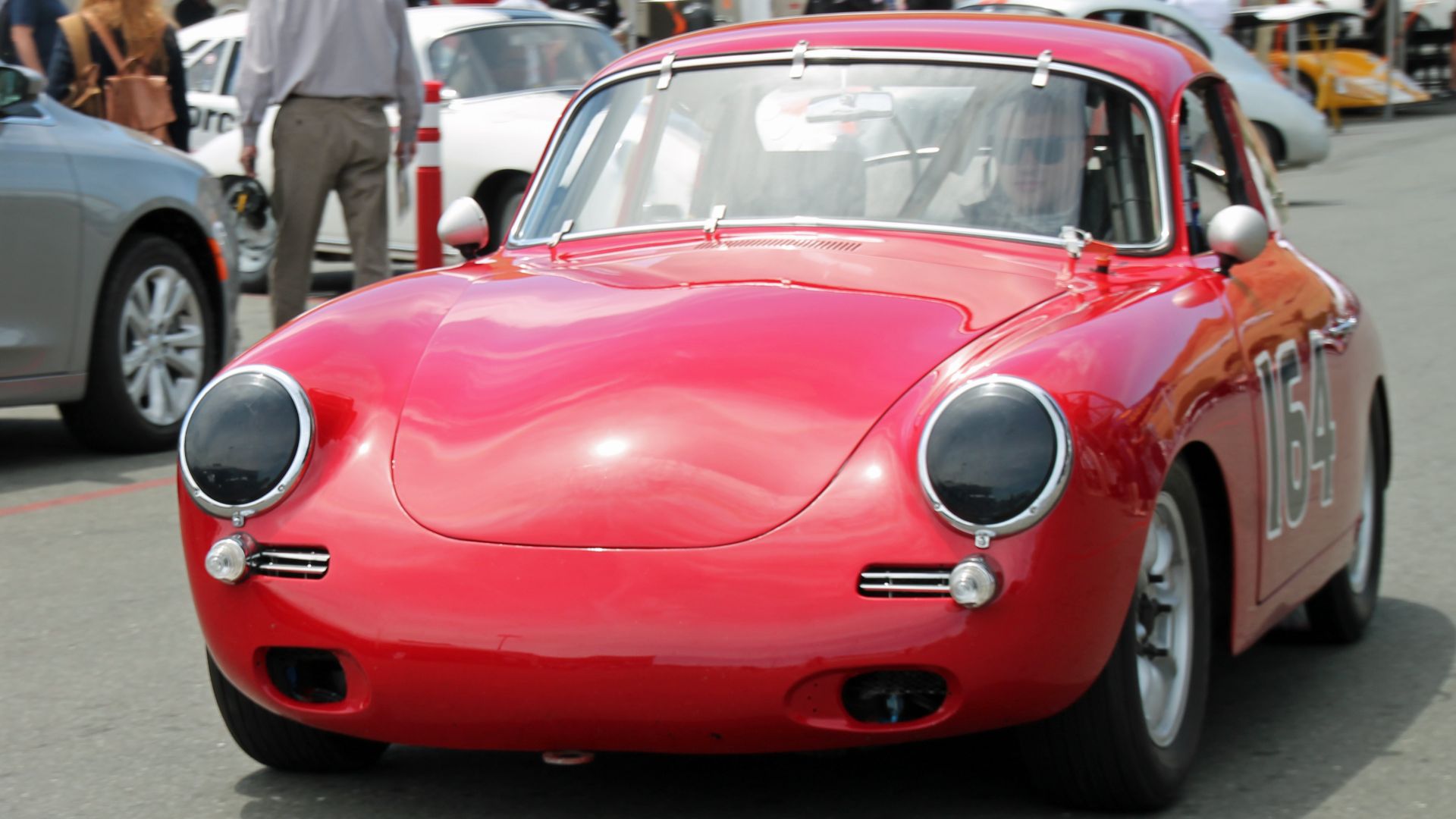 SarahStierch, Wikimedia Commons
SarahStierch, Wikimedia Commons
1961 Porsche 356 Cabriolet
Also known as the 356B, the Porsche 356 Cabriolet was a soft-top Porsche built in 1959, offering significant aesthetic upgrades, particularly to the bodywork. We aren't sure when Letterman bought this gorgeous Porsche, but it's powered by a 1.6L Type 616 four-cylinder engine producing 90 hp and could reach a top speed of 83 mph.
1961 Porsche 356 Cabriolet (Cont'd)
Many of the aesthetic upgrades found in the Cabriolet were relatively small, but they made it easier to drive and use. Its rear-mounted engine was covered by twin grilles, the fuel tank was on the outside, and Porsche installed a larger rear window than its predecessors. It reportedly cost Letterman somewhere around $275,000.
 Freddy, Public domain, Wikimedia Commons
Freddy, Public domain, Wikimedia Commons
1983 Ferrari 512 BBi
Known as the "Berlinetta Boxer," the Ferrari 512 BBi adopted the classic wedge shape of the 1980s and came with a Bosch K-Jetronic fuel-injection system. However, Letterman didn't buy this Ferrari for its power—generating only 360 hp, it was the least powerful Ferrari in the 512 series.
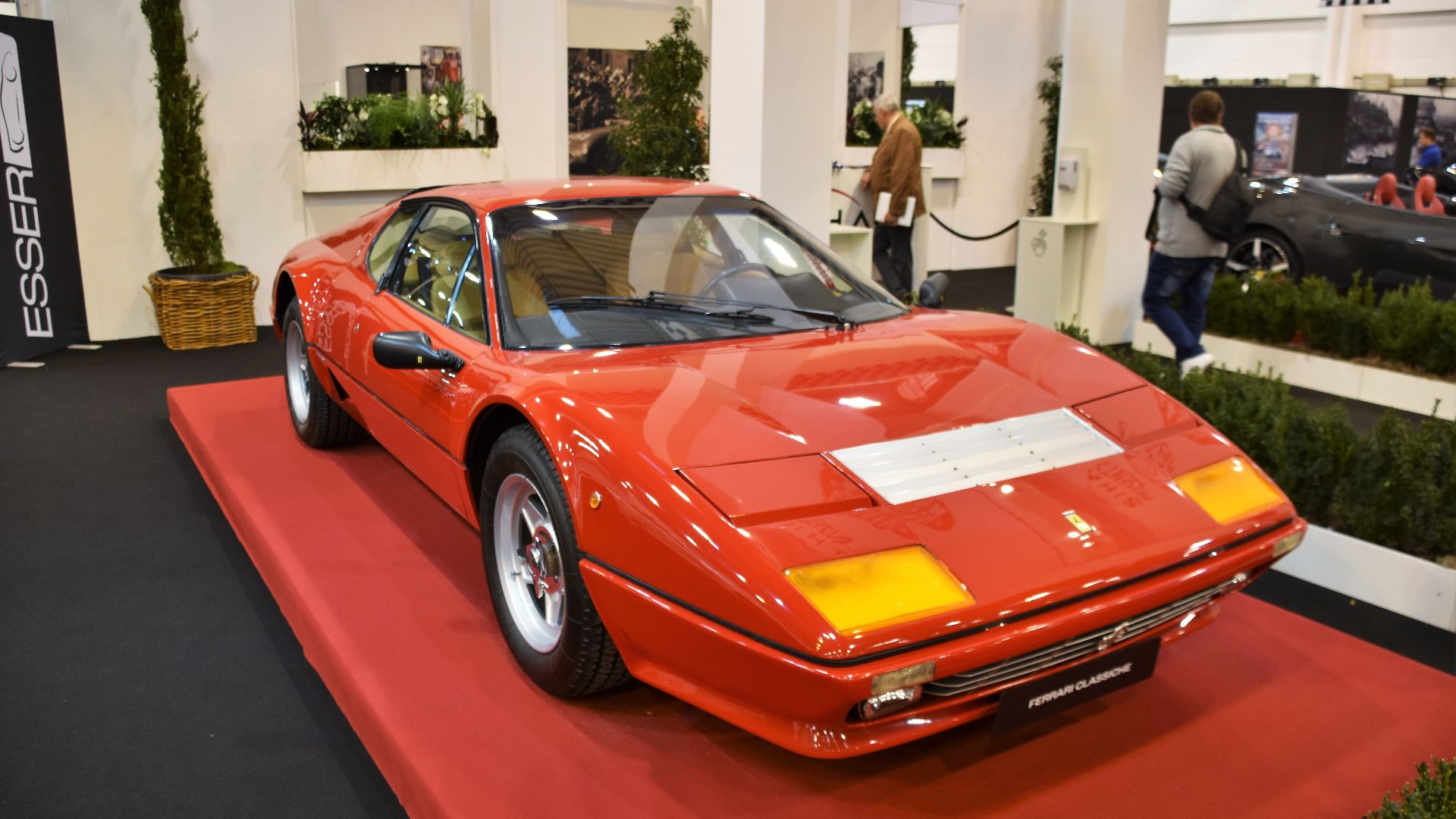 Charles from Port Chester, New York, Wikimedia Commons
Charles from Port Chester, New York, Wikimedia Commons
1983 Ferrari 512 BBi (Cont'd)
Because of the United States auto industry's strict rules on importing foreign cars, the Ferrari 512 BBi had to undergo 75 changes and modifications to adhere to American standards. These included changes to the engine, lighting, seatbelts, and crash reinforcements, such as a brand new front bumper and subframe. It also had to be built with a secondary air injection system and a catalytic converter.
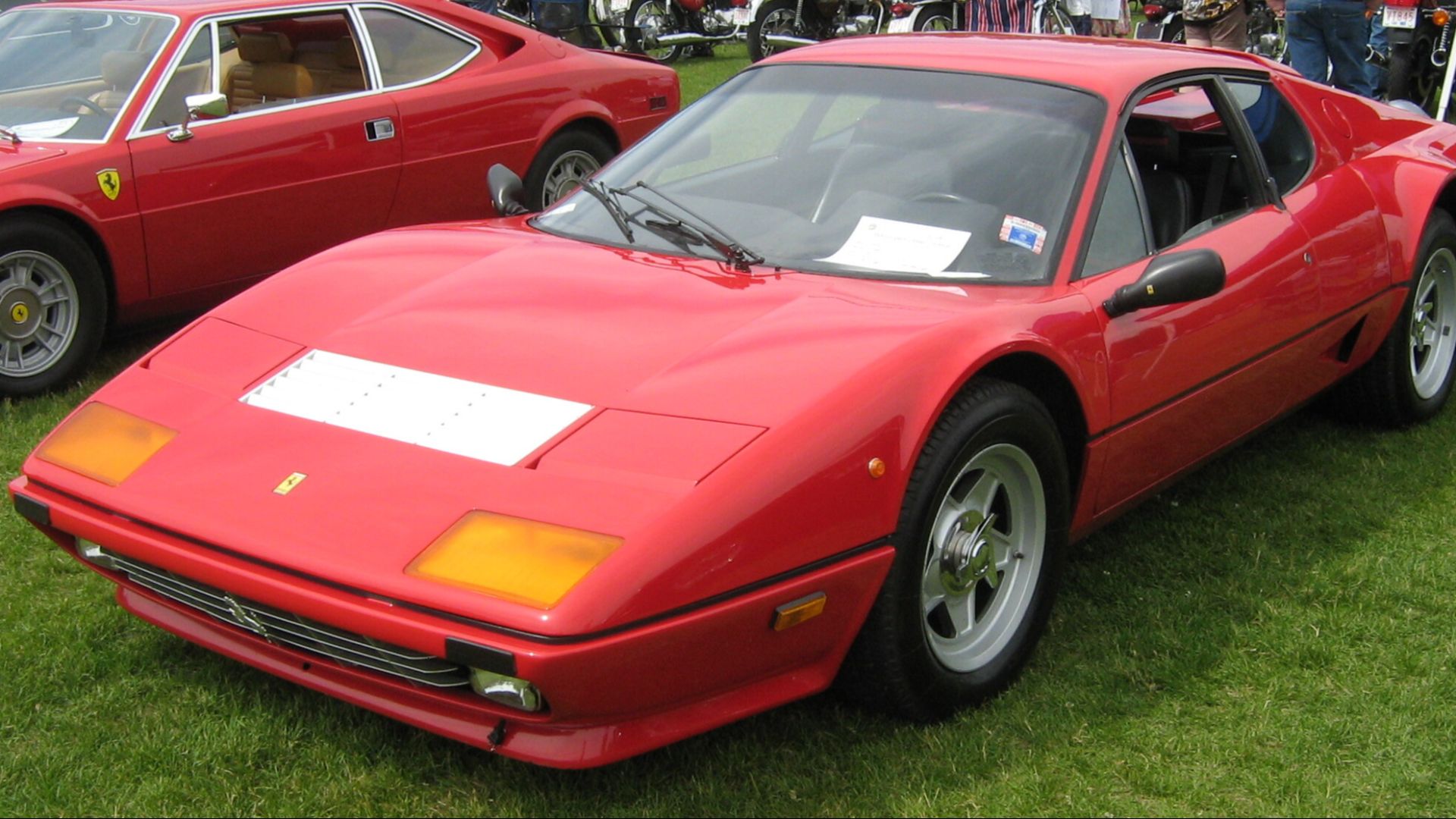 dave_7 from Lethbridge, Canada, Wikimedia Commons
dave_7 from Lethbridge, Canada, Wikimedia Commons
1969 Ferrari Dino 246 GTS
The 1969 Ferrari Dino 246 was one of the most popular Ferraris of the late 1960s and early 1970s. It was named after Ferrari's son, "Dino", who passed away at the age of just 24 from muscular dystrophy. The success of the GT led to calls for a more powerful car. The GTS was Ferrari's answer.
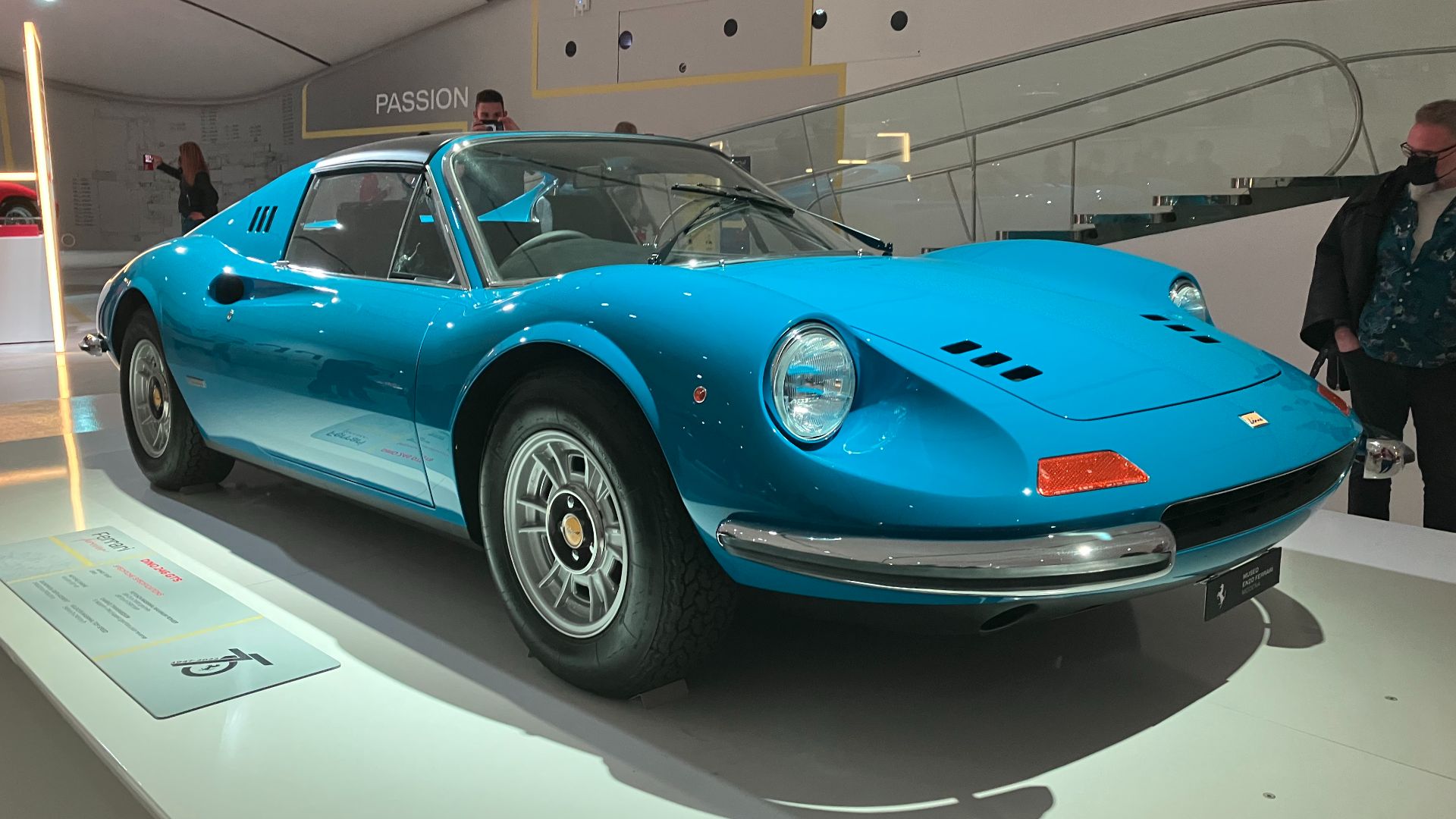 pelican-actor, Wikimedia Commons
pelican-actor, Wikimedia Commons
1969 Ferrari Dino 246 GTS (Cont'd)
Powered by a 2.4L V6 engine, the Dino 246 GTS produced 192 hp and was available only as a fixed-top GT coupe for Letterman's model year. Nearly 2,300 GTS coupes were built, with a staggering top speed of 148 mph and covering 0-60 mph in 5.5 seconds, making it one of the fastest Ferraris of the era, outperforming Porsche.
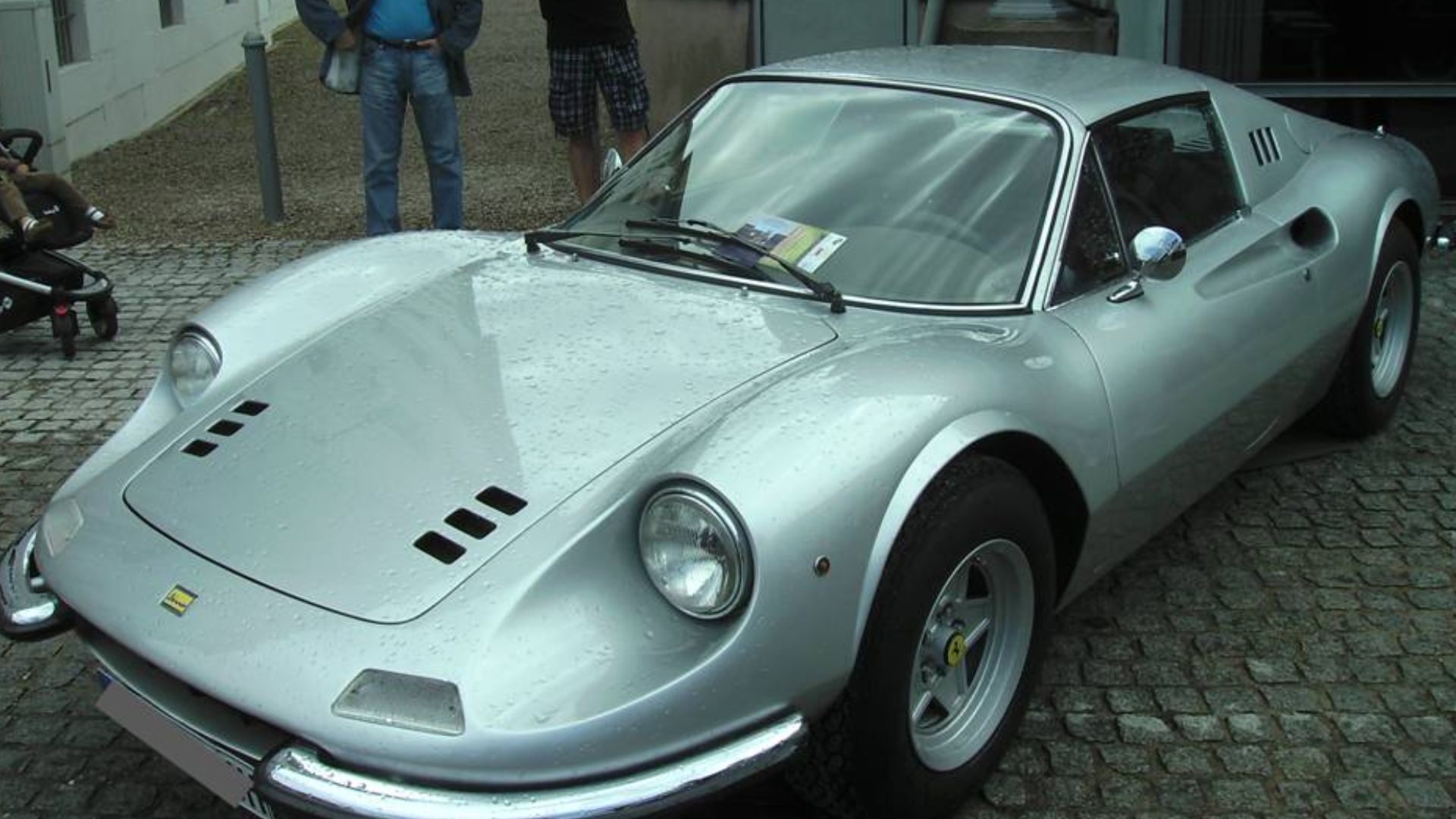 EPei at German Wikipedia, Wikimedia Commons
EPei at German Wikipedia, Wikimedia Commons
1963 Ferrari 250 GTE
Another Ferrari in Letterman's collection is the 1963 Ferrari 250 GTE, the first large-production four-seater Ferrari. The size of the cab was increased by moving the engine forward, giving taller adults like Letterman plenty of legroom. Unlike previous Ferraris in his collection, this one bears better resemblance to a sedan-like taxi. Not that that is necessarily a bad thing.
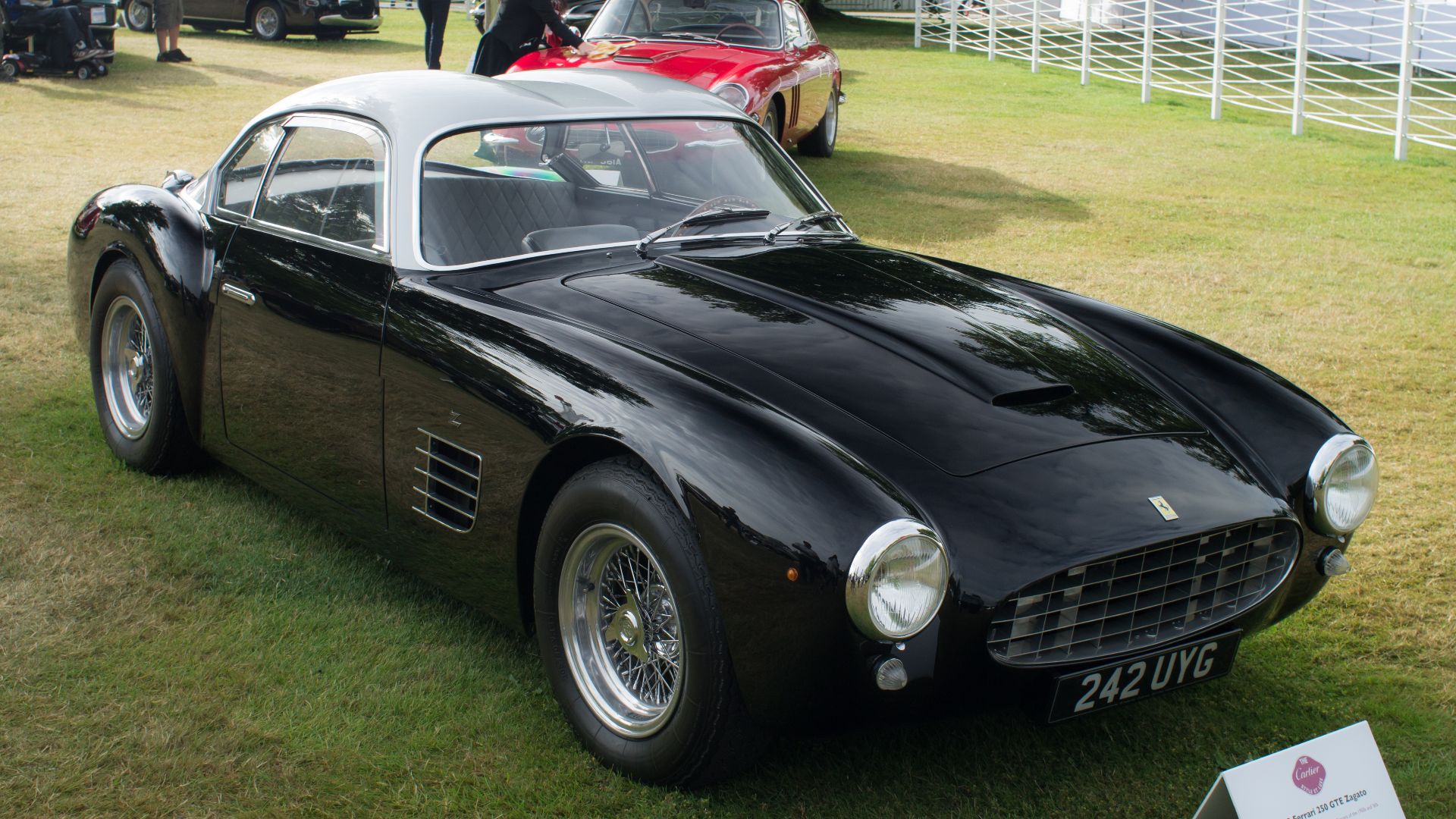 Edvvc from London, UK, Wikimedia Commons
Edvvc from London, UK, Wikimedia Commons
1963 Ferrari 250 GTE (Cont'd)
Despite the taxi-esque appearance, the 250 GTE's performance was anything but pedestrian. Powered by a 3.0L Colombo V12 engine, the 250 GTE produced 237 hp and had a top speed of 140 mph. Unlike other exotic Ferraris in Letterman's collection, it didn't look out of place on American roads.
 Edvvc from London, UK, Wikimedia Commons
Edvvc from London, UK, Wikimedia Commons
1956 Porsche 356 1500 GS Carrera
Back to Porsche and yet another 356 series car in Letterman's collection. The 1956 Porsche 356 1500 GS Carrera was a special edition version of the 356 that paved the way for the 911. The "1500" stood for the 1,582cc (1.6L) engine, while the "GS" was the "Gran Sport" version. The main difference between this and other 356s in Letterman's collection was the special engine.
 Alf van Beem, Wikimedia Commons
Alf van Beem, Wikimedia Commons
1956 Porsche 356 1500 GS Carrera (Cont'd)
The Carrera engine, as it was known, was a four-cylinder boxer-type engine. Air-cooled and naturally aspirated, and fitted with Zenith carburetors, the engine produced 59 hp with a top speed of 124 mph, and could hit 100 mph in 28.2 seconds. It's not exactly quick, but these 1950s Porsches were built for a whole lot more than speed. They were the epitome of sports car engineering at the time.
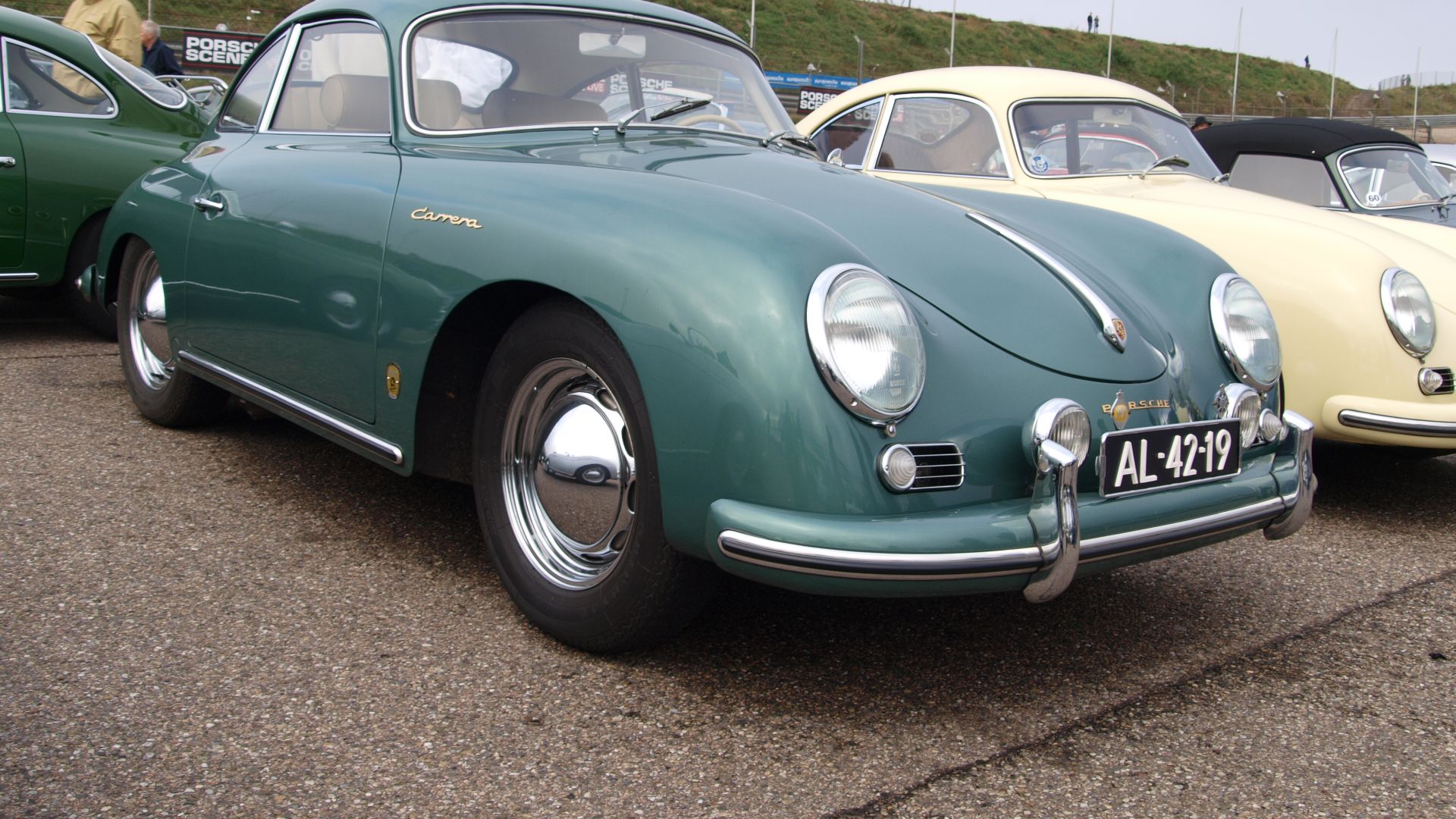 Alf van Beem, Wikimedia Commons
Alf van Beem, Wikimedia Commons
1963 Ferrari 250 GT Lusso
Swinging back to Ferrari with this gorgeous 1963 Ferrari 250 GT Lusso, manufactured between 1962 and 1964. Despite its short lifespan, it's considered one of Ferrari's greatest cars. The two-seater GT Coupe was comfortable and spacious, while maintaining the sporty feel of a Ferrari.
1963 Ferrari 250 GT Lusso (Cont'd)
Not only is it one of the most beautiful Ferraris ever built, but it was also the fastest passenger car in the world at the time, producing a top speed of 150 mph from a 4.0L Colombo V12 engine. Just 351 of these beauties were built over 18 months, making it one of the rarest special edition Ferraris ever. Another feather in Letterman's Ferrari cap.
1985 Ferrari 288 GTO
The 1985 Ferrari 288 GTO was a specialized version of the Ferrari 308 GTB, intended for racing. Despite appearing in Comedians In Cars Getting Coffee and his love of cars being well-publicized, we don't think David Letterman is much of a racer, thus the choice of a more subdued Ferrari.
1985 Ferrari 288 GTO (Cont'd)
Nevertheless, the 288 GTO packed some serious punch in 1985, although the car had to meet very specific build requirements in order to be considered for homologation by the FIA. This meant a 2.8L turbocharged engine that was mounted longitudinally to account for the twin-turbochargers and intercoolers. The top speed of this beast was 189 mph, making it one of the fastest production cars of its time.
1974 Ferrari Daytona
Finally, we come to the last car and final Ferrari in Letterman's awesome collection: a 1974 Ferrari Daytona. It was released to celebrate Ferrari's shocking victory in 1967, although it's reported that Enzo Ferrari detested the name and the American media were the only ones to use it. Letterman's Daytona featured a 4.4L Colombo V12 engine that produced 347 hp.
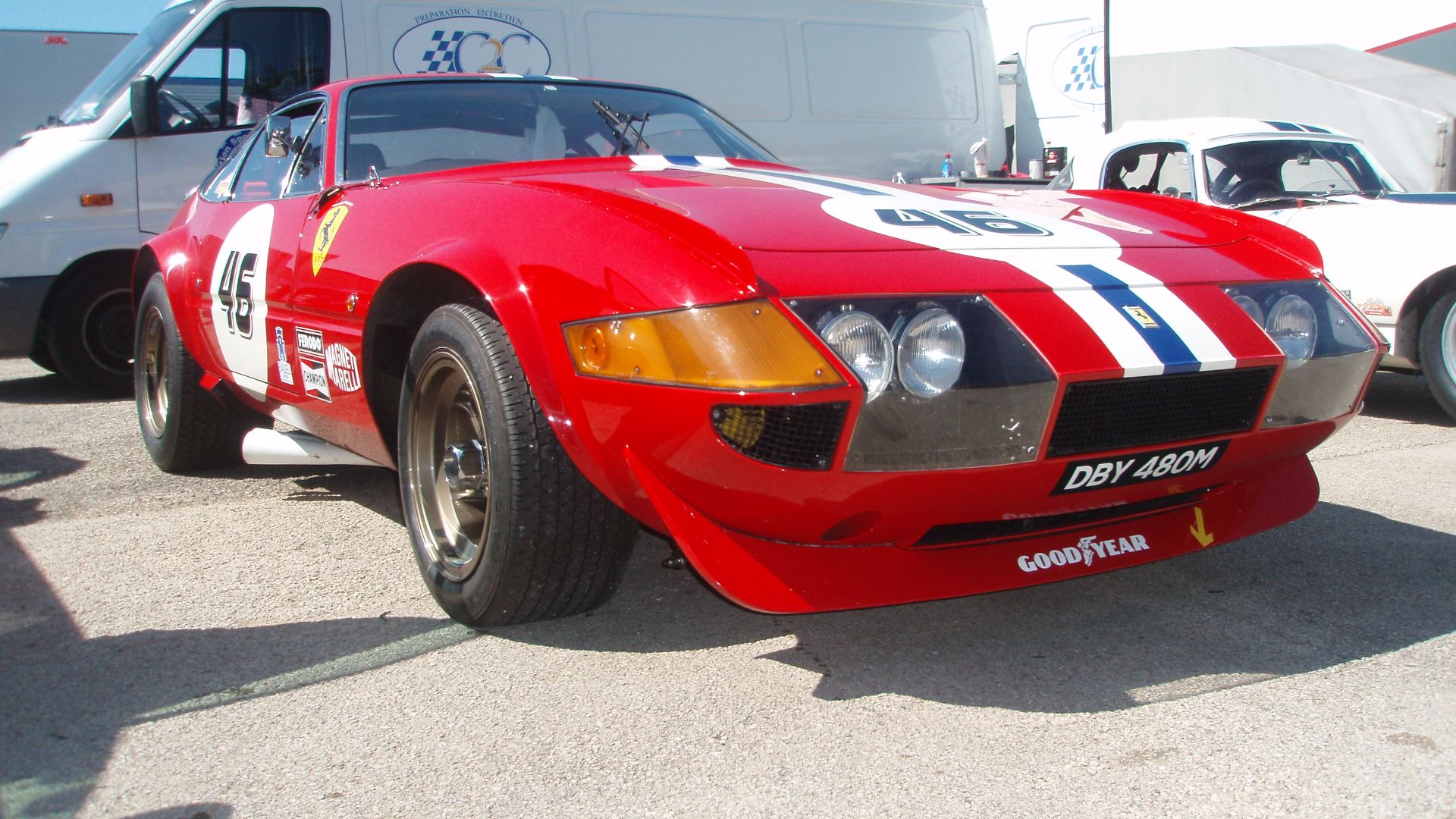 Akela NDE (talk), Wikimedia Commons
Akela NDE (talk), Wikimedia Commons
1974 Ferrari Daytona (Cont'd)
The Daytona's wedge shape was classic 1970s, although the original headlights had to be swapped out for flip-up ones in 1971, thanks to new US regulations. Just over 1,400 Daytonas were produced by Ferrari, with each one being hand-built by Scaglietti, who had a Ferrari named after him. The Daytona could reach a top speed of 174 mph and hit 60 mph in just 5.4 seconds. An exhilarating final ride in Letterman's garage.
 Akela NDE (talk), Wikimedia Commons
Akela NDE (talk), Wikimedia Commons
Letterman's Racing Team Debacle
David Letterman has a passion for racing, but his foray into building a racing team as an owner was fraught with problems. Alongside Bobby Rahal (of Indy 500 fame) and Mike Lanigan, Letterman created the Indy 500 Racing team, Rahal Letterman Lanigan Racing Team. But in September of 2024, the offices of the organization were raided by the FBI. The investigators remained tight-lipped, but it purportedly concerns the theft of intellectual property. Letterman is reportedly uninvolved in the crime in any direct fashion.
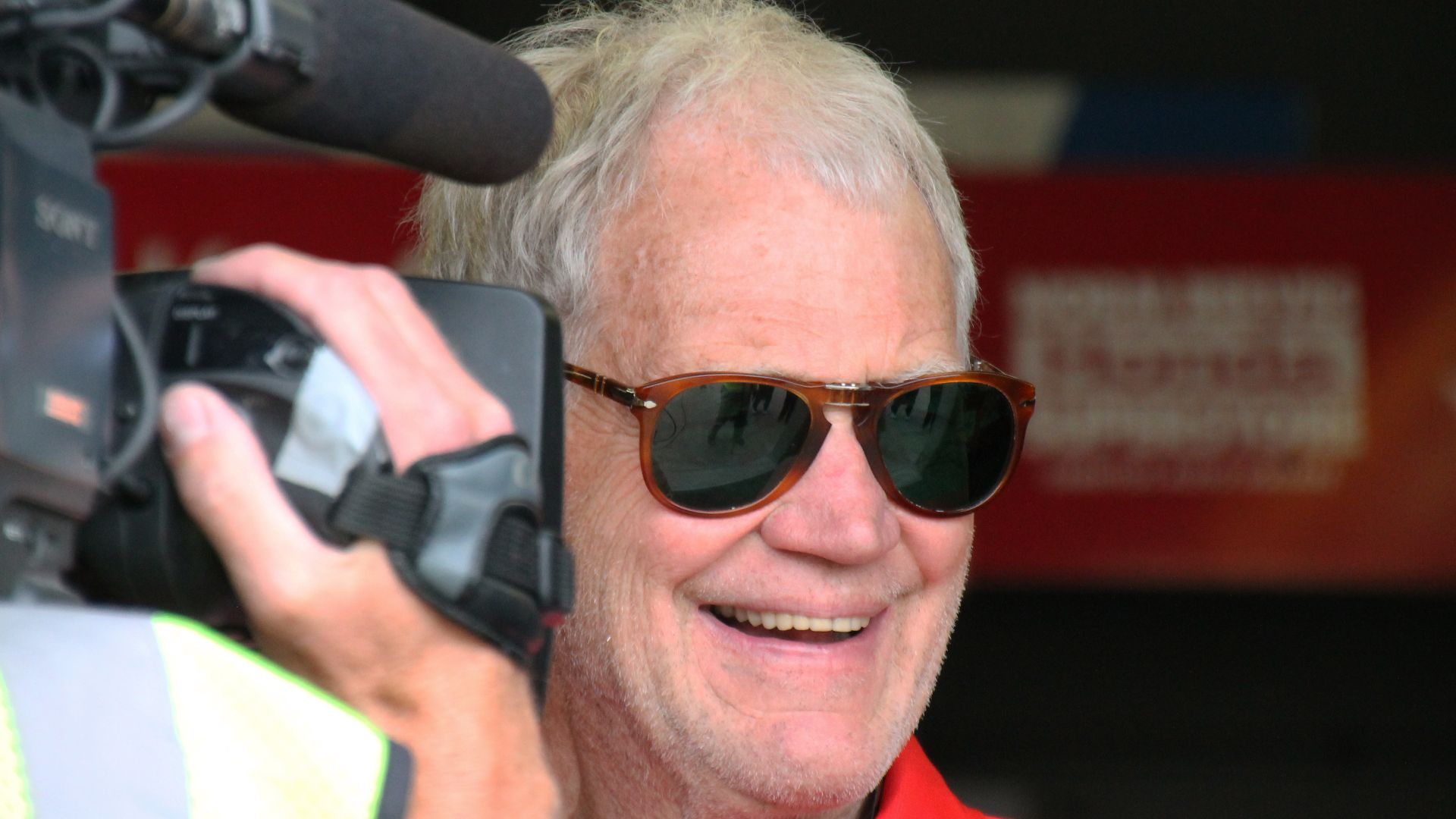 Sarah Stierch, Wikimedia Commons
Sarah Stierch, Wikimedia Commons
You May Also Like:
Car Brands Losing Customers Fast
The Extraordinary Story Of The American Muscle Car Museum

